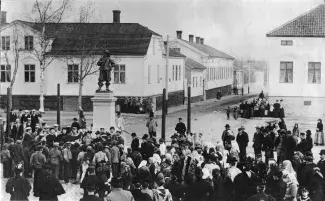Old Town Raahe is one of Finland's best-preserved wooden towns from the 1800s, featuring around 150 historic residential buildings. The "Stories of Old Town Raahe" article series showcases historical sites, figures, and tales from the area. This series is produced in collaboration with the Raahe Museum and Raahe tourist guides, with photos from the Raahe Museum collection.
In the 1600s, a law restricted trade to designated markets. Charles IX ordered merchants to move to coastal ports, one being Saloinen. In 1616, Saloinen was granted a free market starting on St. Olaf’s Day, lasting two weeks. Merchants arrived from various cities, and farmers sold goods like tar and butter.
When Raahe was founded, the market moved from Saloinen to Rantatori, next to the museum. After Raahe’s 1810 fire, market trade changed, moving to the newly built Isotori (now Pekkatori) in the town center. Animal trade shifted to Härkätori, while fish trading remained at Rantatori.
Pekkatori, designed after the fire by Gustaf Odenwall, is a well-preserved Italian Renaissance-style square. It’s one of the best-preserved wooden town squares in Finland, surrounded by 19th-century wooden classicist buildings. Many prominent Raahe families, including merchants, councilmen, and shipowners, built homes around it.
Pekkatori became a famous market square. In the 1800s, Raahe held three annual markets: a month-long butter market in September, an autumn market in October, and a Candlemas market in February. Agricultural products, timber, livestock, and fish were sold. Bartering was common, with patrons trading goods like timber for salt and tobacco. The markets also featured entertainment like dances and fairs with carousels. Market police were necessary to control unruly behavior.
In 1888, when a statue of Pietari Brahe was erected in Pekkatori, trading moved back to Rantatori. Animal trade continued at Härkätori. Pietari Brahe, also known as Pekka, founded Raahe in 1649. He was appointed governor-general of Finland, improving the education system, postal service, roads, and inns. Many Finnish cities owe their existence to Brahe. The statue in Pekkatori was sculpted by Walter Runeberg, and the local festival Pekanpäivät is celebrated in his honor each summer, with a flower wreath placed on the statue. Brahe is also honored with a street named Brahenkatu in Old Town Raahe.
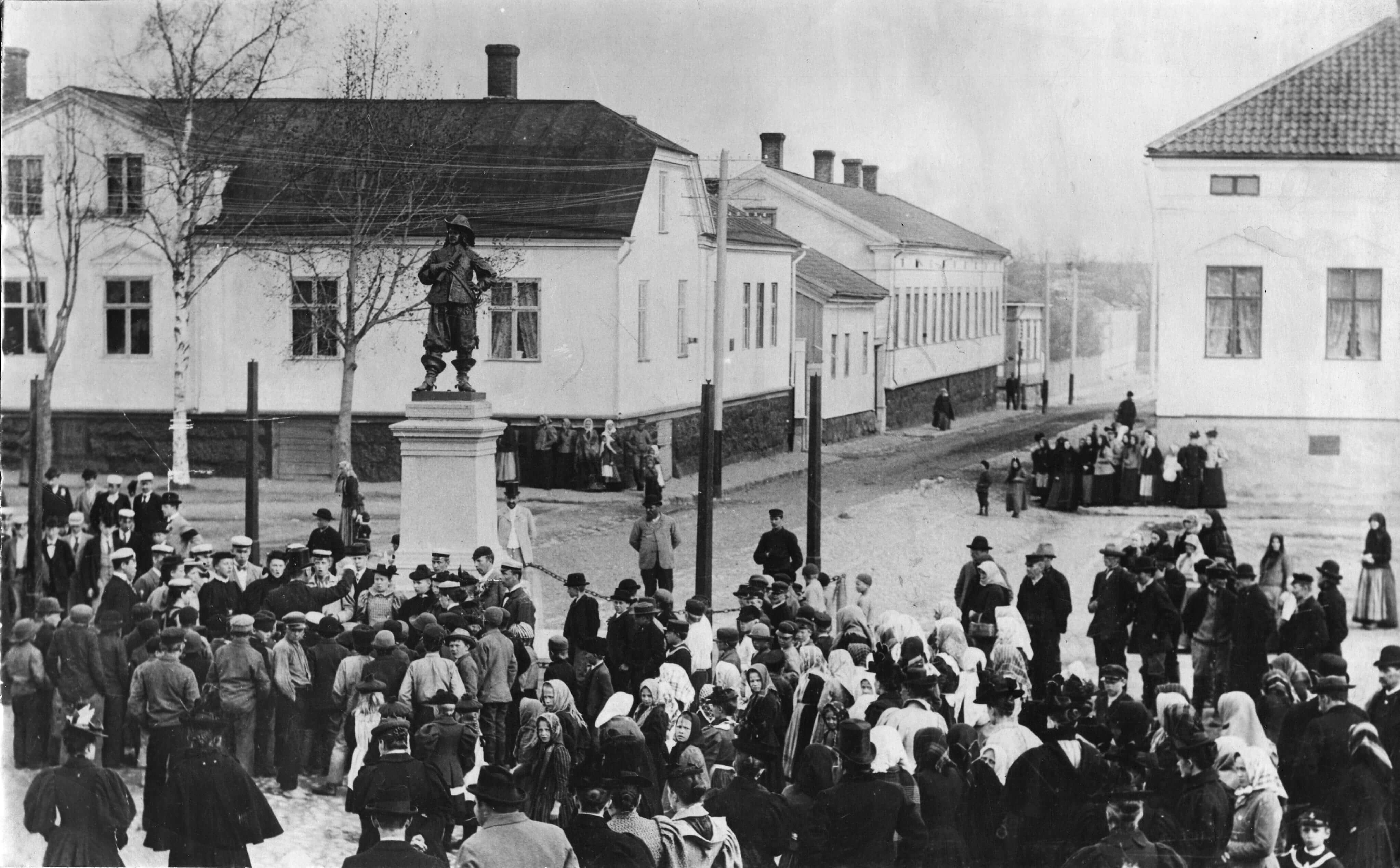
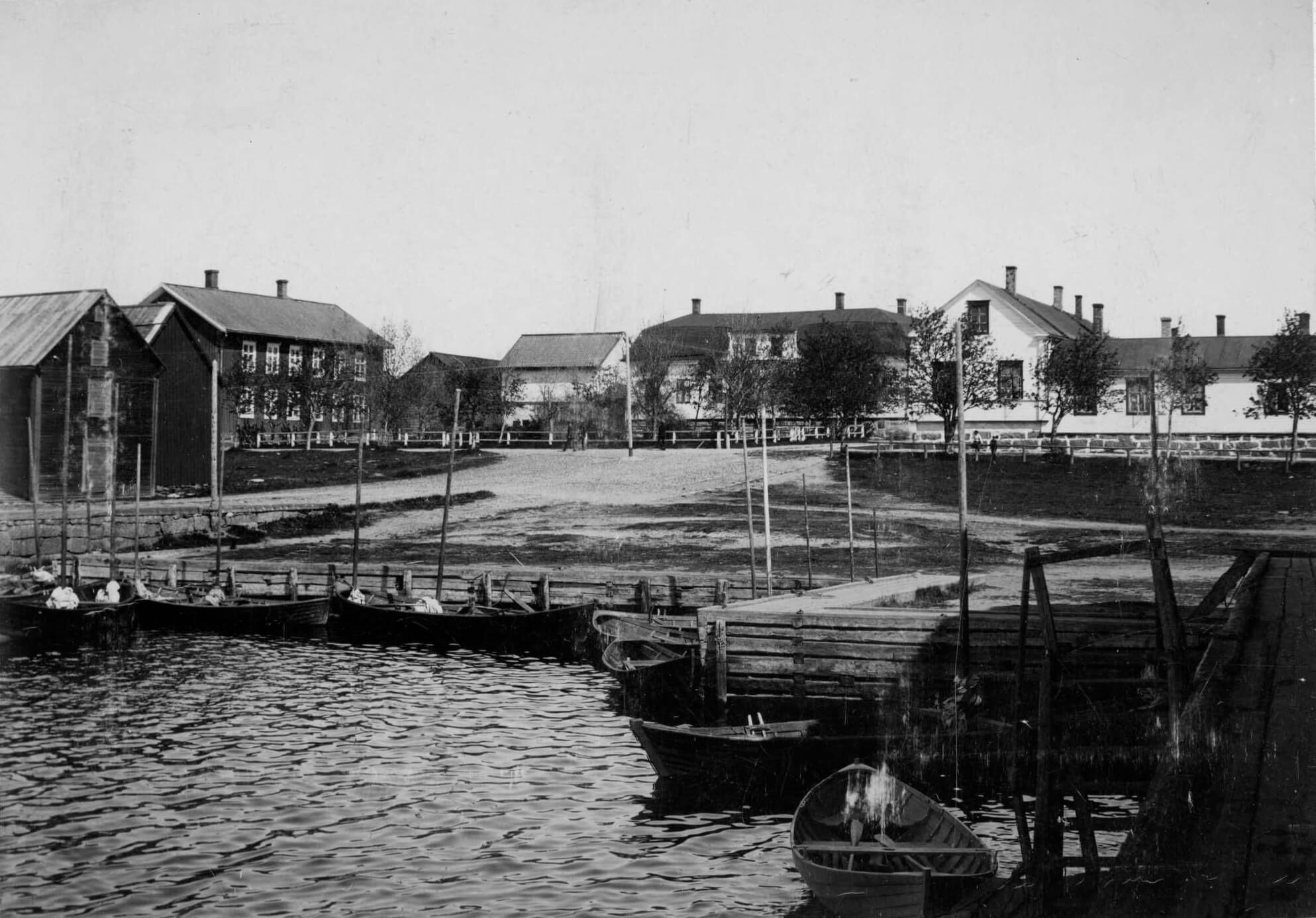
Back in the mid-1600s, when Count Per Brahe founded Raahe (then known as Salo), he needed a strong, enterprising man to manage tax revenues. He chose the loyal Henrik Corte, a German who came to Raahe from Stockholm. Tasked with establishing the town’s harbor, Corte initially hesitated to move from Oulu to undeveloped Raahe, but the decision proved fortunate.
Marrying a local merchant’s daughter, Kristina Forbus, Corte quickly rose in influence, holding council sessions in the Town Hall. Known for his iron-fisted leadership, he often clashed with other merchants but maintained good relations with farmers. Corte’s trade with Stockholm made him a wealthy man, and most of Raahe’s trade flowed through him.
As Corte aged, his son, Henrik Henrikinpoika Corte, took on the title of deputy mayor. Following his father’s death in 1680, the younger Corte became mayor and later served in the parliament. Known for his fiery nature, he married three times and had a son, Gabriel Corte, who succeeded him. Gabriel’s tenure as mayor was interrupted by the Great Northern War, during which the Corte family, like many others, fled to Sweden. Gabriel returned post-war and resumed his mayoral duties.
Henrik Corte’s impressive house once stood next to the market square but was destroyed during wartime. Today, the Sovelius House occupies the site, with Corte Street named in honor of this influential family.
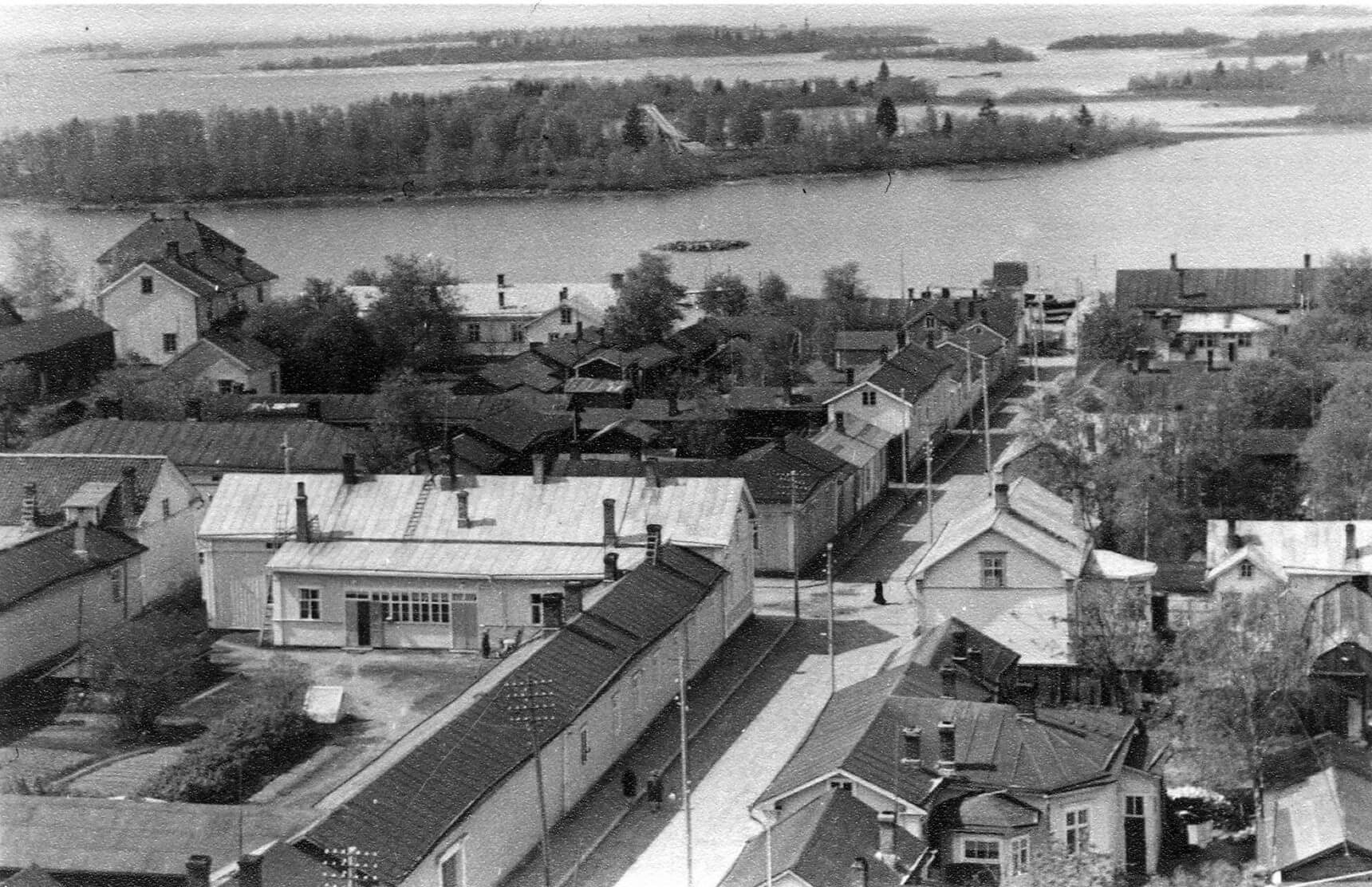
Raahe’s first town hall was built in 1654 by the square (now Myhrberg Park). This original structure, on the site of today’s Heikku house, was burned down by the Russians during the Great Wrath. A new town hall was constructed in 1729 on the same spot, but it too was destroyed in the Great Fire of Raahe in 1810. Following the fire, surveyor Gustaf Odenwall designed a new city plan with a square at its center (now Pekkatori), flanked by the homes of Raahe’s prominent families. The southwest corner was reserved for a future town hall, but the plan was never executed. Eventually, in 1862, the city purchased a building from the estate of customs officer Gustav Robert Brunow, constructed by the renowned architect Anders Frederik Granstedt in 1839, to serve as the new town hall.
Upon purchase, the building required significant work: the walls were plastered, painted white, and fitted with a tin roof. The first floor was completed, though the second floor remained unfinished. During Raahe’s 300th anniversary in the 1940s, major renovations were undertaken, adding new entrances, transforming the attic, and refreshing the floors and walls. In the 1960s, rising ground levels exposed the original foundation logs, which began to decay upon air exposure, necessitating further repairs. The foundations were reinforced, adding 400 square meters of usable cellar space and more work areas on the second floor. In 2004, an extensive restoration returned the entrances to their original locations on the courtyard side.
In the town hall’s ceremonial hall hangs a famous 1894 painting by Swedish marine artist H. Af Sillén, depicting the Swedish navy in training maneuvers. This artwork was won by local shipowner Henrik Sovelius in a Stockholm art lottery, despite Swedish King Oscar II tried to buy the painting from Sovelius. Sillén had previously painted three similar works, owned by the King of Bulgaria, German Emperor Wilhelm II, and King Oscar II himself.
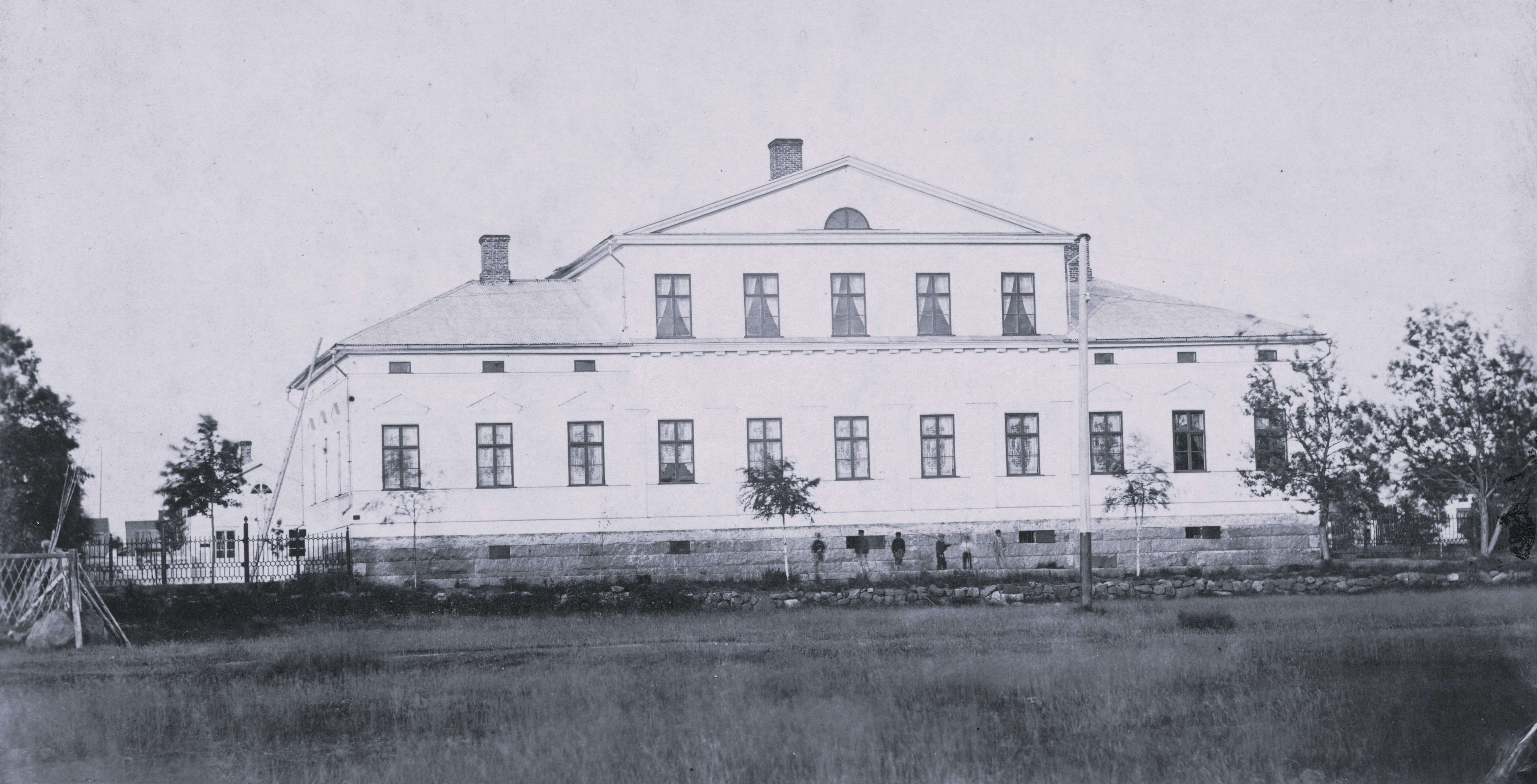
When Raahe was founded, a school was established. The town priest served as the teacher. The students were sons of burghers, craftsmen, and members of the gentry. The language of instruction was Swedish. A school building was constructed north of the church at the end of the 1600s and rebuilt in 1750s. President Kyösti Kallio began his education in this building. The school burned down with the church in 1908.
Today known as the Central School, was constructed in 1912. In 1958, a new school building was constructed, now the current middle school and high school. The Central School premises were then repurposed for primary education. The primary school initially started next to Lybecker School on Reiponkatu in a building that later housed a Swedish community school. In 1874, the school moved to the now known Frieman’s house. The Central School has served as a lower-level comprehensive school since 1974.
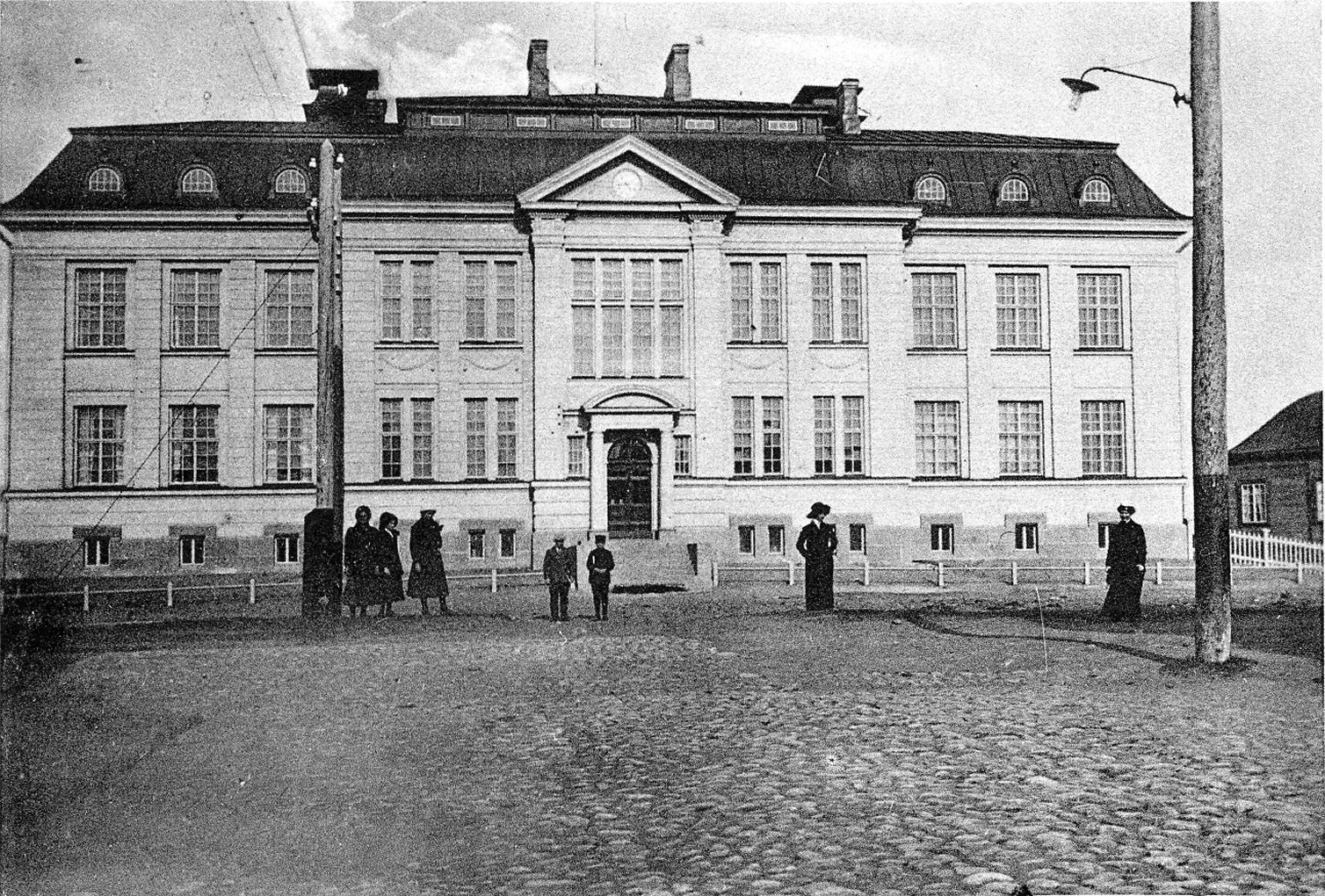
The Lybecker Girls' School, intended for poor girls and orphaned children, was established in 1844. Sofia Franzén donated the funds to establish the school. The school located in Reiponkatu simce 1859 and operated there for the next 125 years, becoming a craft school in 1872.
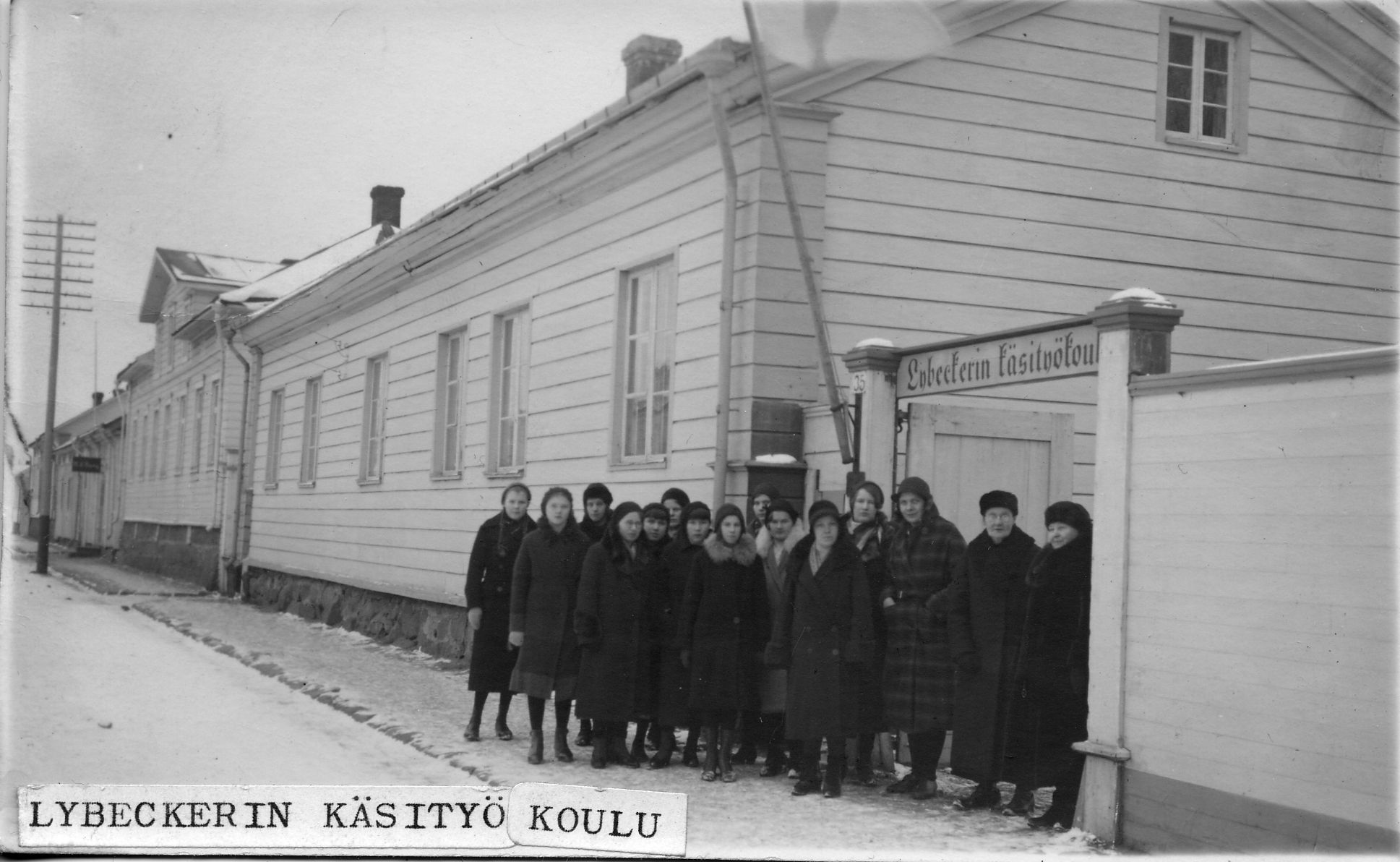
The Raahe Civic and Commercial School was inaugurated in 1882. Its establishment was supported by merchant and shipowner brothers Johan and Baltzar Fellman, whose financial contributions made the school possible. The school’s name referred to good general education and high-level business skills.
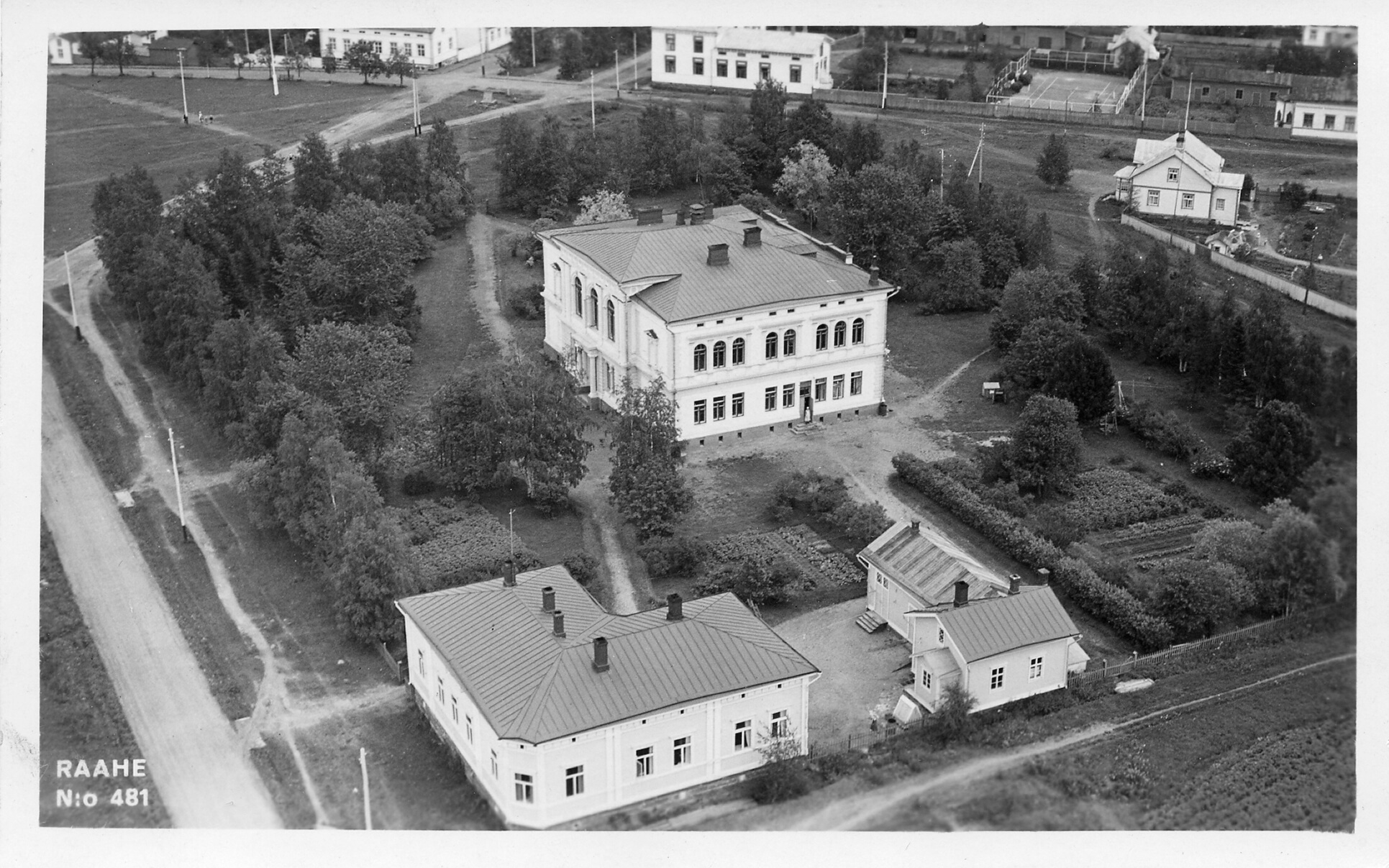
A teacher's seminary for women was established in Raahe in 1896. Later young men were also allowed. The seminary began its operations in the Lindberg House on Rantakatu. The seminary building was completed in Pitkäkari in 1899. The practice school operated until the seminary’s closure in 1971, after which it became Pitkäkari Elementary School.
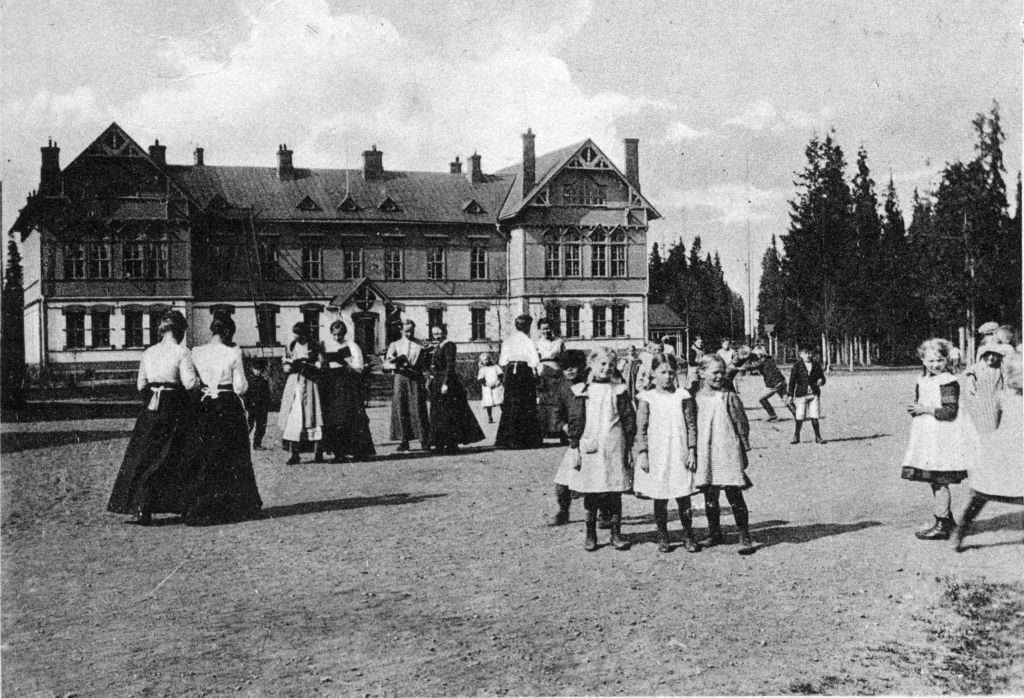
Founded in 1903, Svenska Småbarns-Skolan was initially located in a corner of Pekkatori. A new school building was later constructed at Palokunnankatu 24, where the school operated until its closure in 1933.
Raahe's first church, a small preaching hall, was located near current Myhrberg Park. A new church was soon desired, and a wooden church was completed in 1655 in the northeastern part of the village. Around 1670, Mikael Balt created ornate wooden sculptures for the church. After the Great Northern War, the church fell into disrepair and was renovated in the 1740s, during which the interior was whitewashed. In 1884, Balt's sculptures were removed for restoration and repainted, but their return sparked debate. Some valued their artistic significance, while others found them inappropriate. Ultimately, they were moved to the bell tower. Today, the sculptures are displayed in the Packhouse Museum.
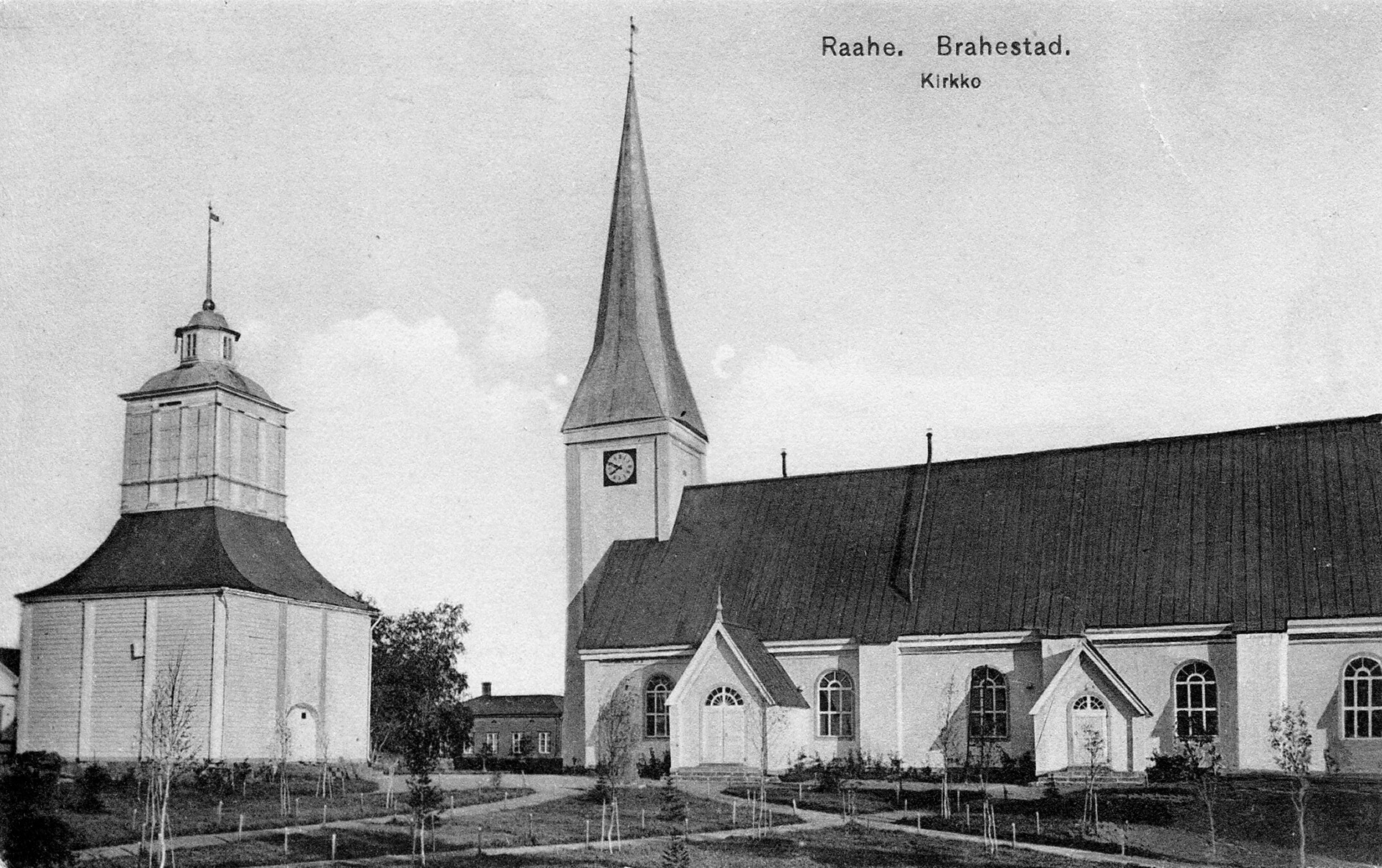
On July 23 in 1908, a fire broke out, and by morning nothing remained of the church. This event led to the establishment of the Pattijoki parish, with Pattijoki residents building their own church instead of contributing to Raahe’s new one.
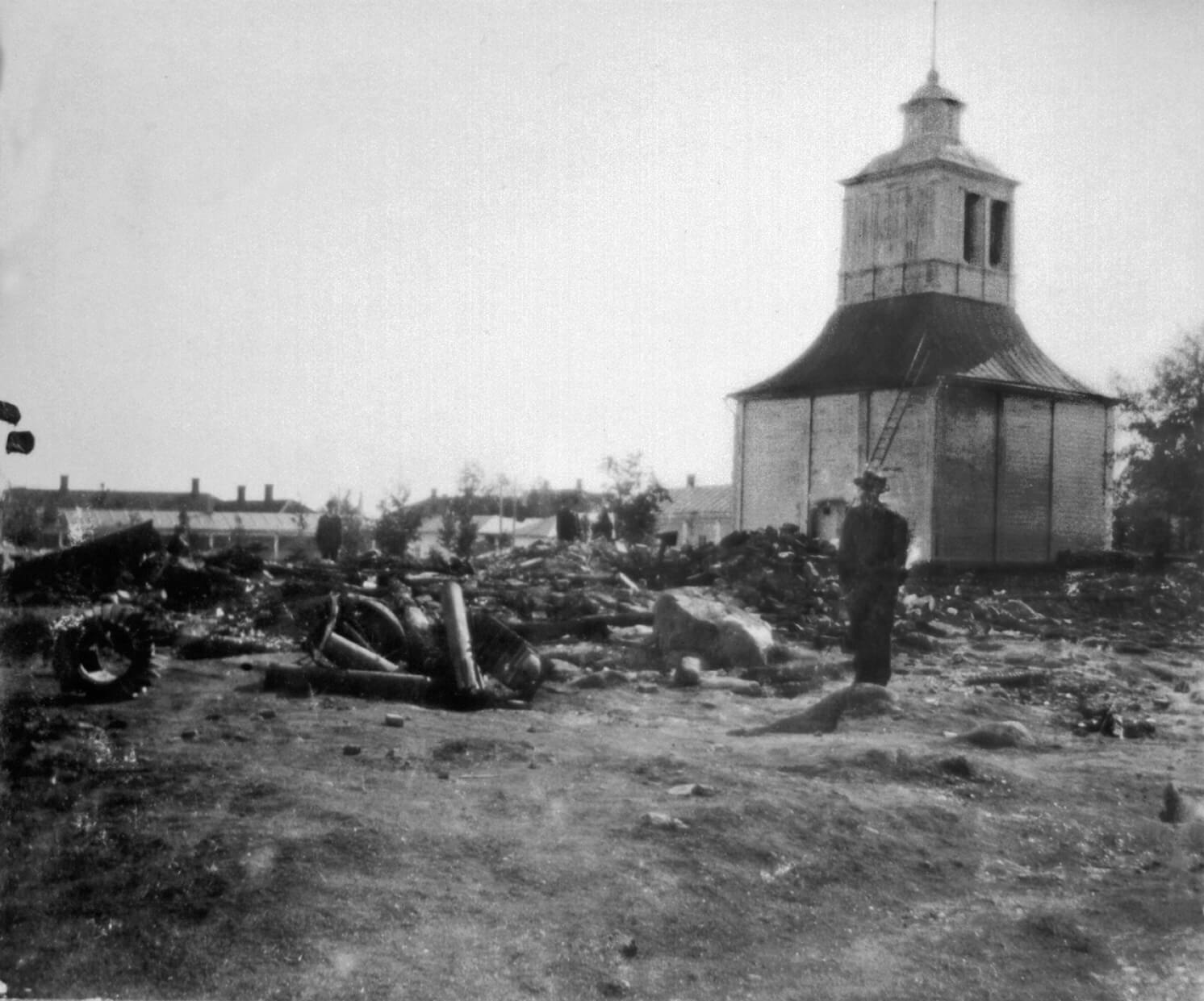
Raahe’s new Church of the Holy Trinity, designed by Josef Stenbäck, was built from granite to ensure it was fireproof. It was consecrated on March 23, 1912. The 52-meter tower served as a navigational landmark for sailors. A weathercock, symbolizing Peter’s denial of Jesus, was installed atop the spire, a typical feature of coastal churches. The chandeliers and sconces, resembling ship railings, were forged by local blacksmith Adolf Frederik Westman.
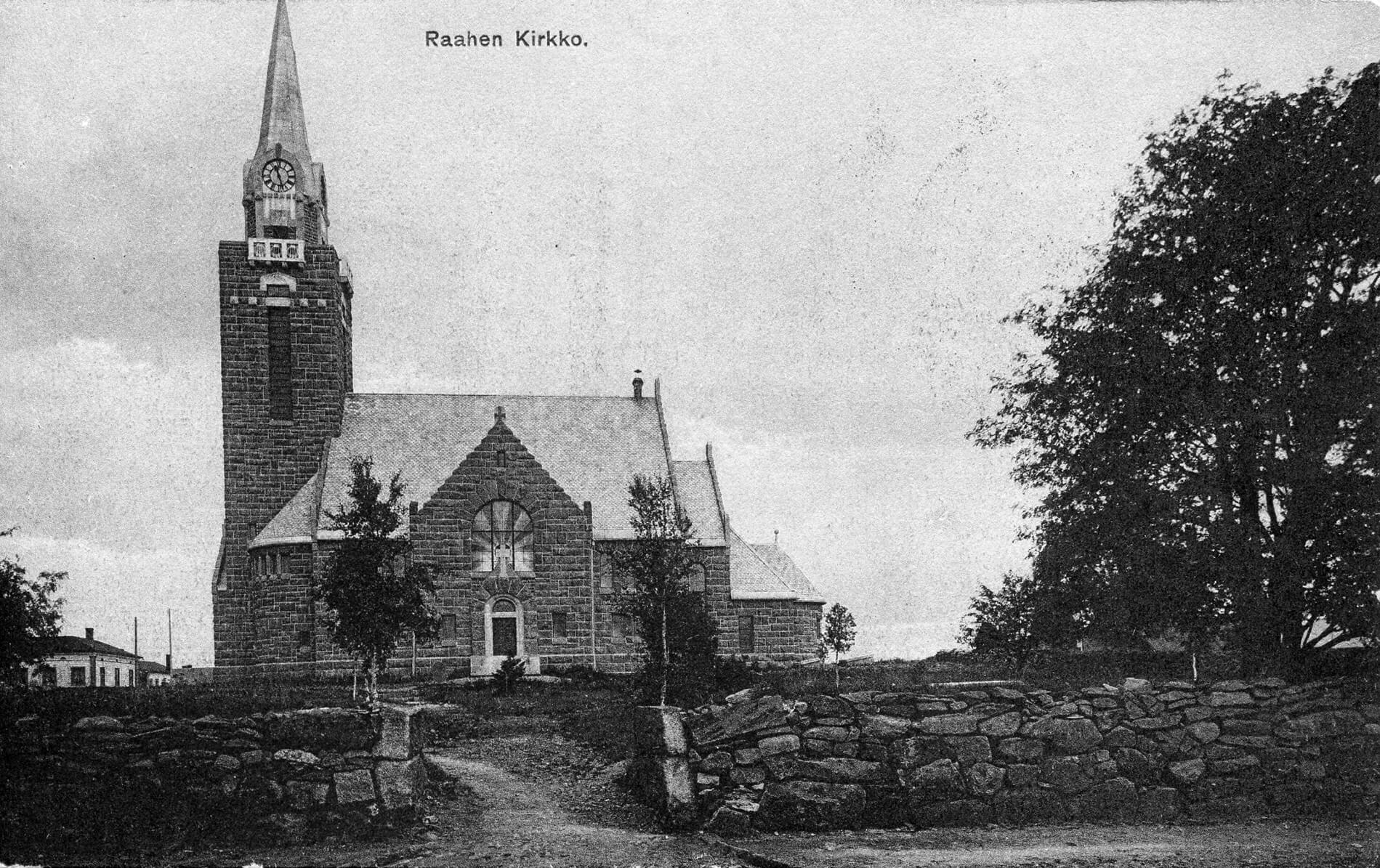
In 1926, the church received an altarpiece by Eero Järnefelt depicting Jesus calming the storm. A votive ship, a common feature in coastal churches, was added in 1990. It was crafted by Olavi Pelkonen, who spent 2,600 hours creating the detailed model.
On October 6, 1810, a fire started on the Bergh property, spreading quickly due to strong winds. Within four hours, the blaze destroyed the town hall and 75% of Raahe's buildings, sparing only five large houses, the church, and the Katinhäntä area. The city’s three large fire pumps and one small one managed to save part of the town. The cause of the fire remains unknown, though a negligent fire watchman was fined.
Reconstruction introduced strict building regulations: houses had to be at least two meters apart, no two-story buildings were allowed, streets were widened, plots enlarged, foundations raised, roofs could not be tarred, and private saunas were banned from courtyards.
In 1859, Raahe established a fire brigade. Most of the city’s men were at sea, so women also participated. Fire surveillance took place in the hose room and church tower. After the Raahe Church burned in 1908, the fire brigade's equipment and leadership were deemed inadequate, prompting the founding of a volunteer fire brigade. In 1911, the brigade built a firehouse on Aitakatu with the city providing a free plot. The volunteer brigade remained active until the First World War, but enthusiasm waned in the 1920s, and activity ceased by the decade's end.
In 1929, the firehouse was sold to the Civil Guard. After the Civil Guards were disbanded in 1944, the building was donated to the City of Raahe. Renamed Raahela in 1949, it initially served as a youth center. From 1962 onward, it also became a venue for sports, remaining the city’s only indoor sports facility for nearly two decades.
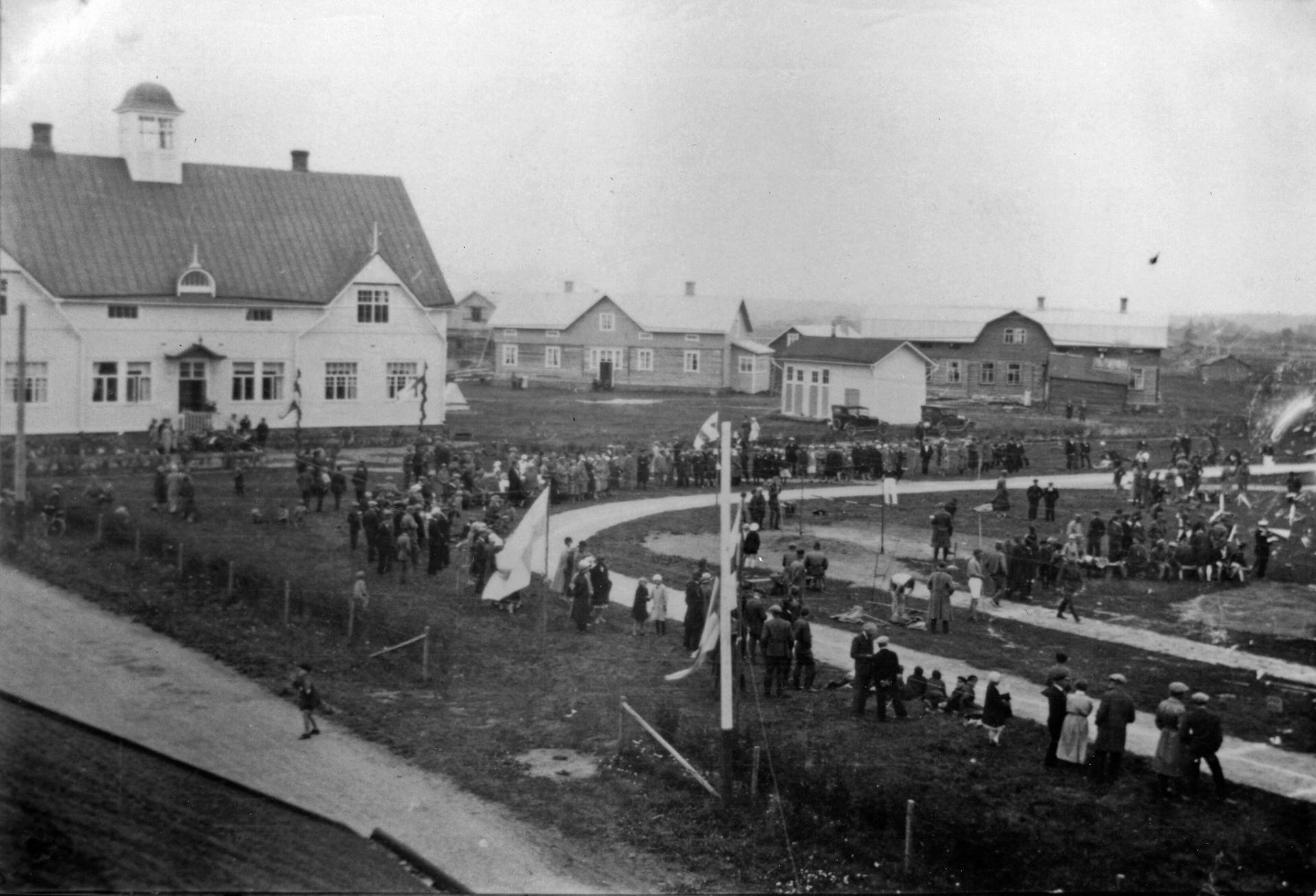
Raahe’s first pharmacy was founded in 1793 by Jean Galenius, making it Finland’s 21st licensed pharmacy. While many 18th-century pharmacists were foreign-born, Galenius was from Pietarsaari. After him, the pharmacy was managed by two Swedish pharmacists, Johan S.N. Stahre and Reinhold O. Fock, before being owned by the locally born Wichman family from 1817 to 1862.
During the Raahe fire of 1810, Stahre’s house (now the Himanka house garden) was listed among damaged properties, but the pharmacy survived. This suggests that some artifacts in Raahe’s Pharmacy Museum, like hand-blown glass bottles and herb boxes, may date back to Galenius’s time. Stahre later sold the pharmacy to Fock, who held the position for six years.
Pharmacists were educated chemists of their time. Unlike Central Europe, Raahe pharmacies never sold remedies made from frog spawn or snakes. Instead, local medicinal plants were widely used, and many medicines were prepared on-site. Supplies were also imported from Stockholm and Lübeck, though long sea voyages often led to spoilage. The arrival of the railway in 1899 improved logistics.
Karl Wichman, the pharmacy’s fourth owner, began as Galenius’s apprentice at 12. He bought the pharmacy in 1817, relocating it to Kirkkokatu opposite the church. Wichman added a pharmacy wing to his home in 1820, while the residential wing on Cortenkatu dates back to 1787. He and his wife Beata Frosterus had 12 children, two of whom became pharmacists. Their son Johan Valentin continued the family’s work in Raahe, while Axel Teodor established Kokkola’s second pharmacy.
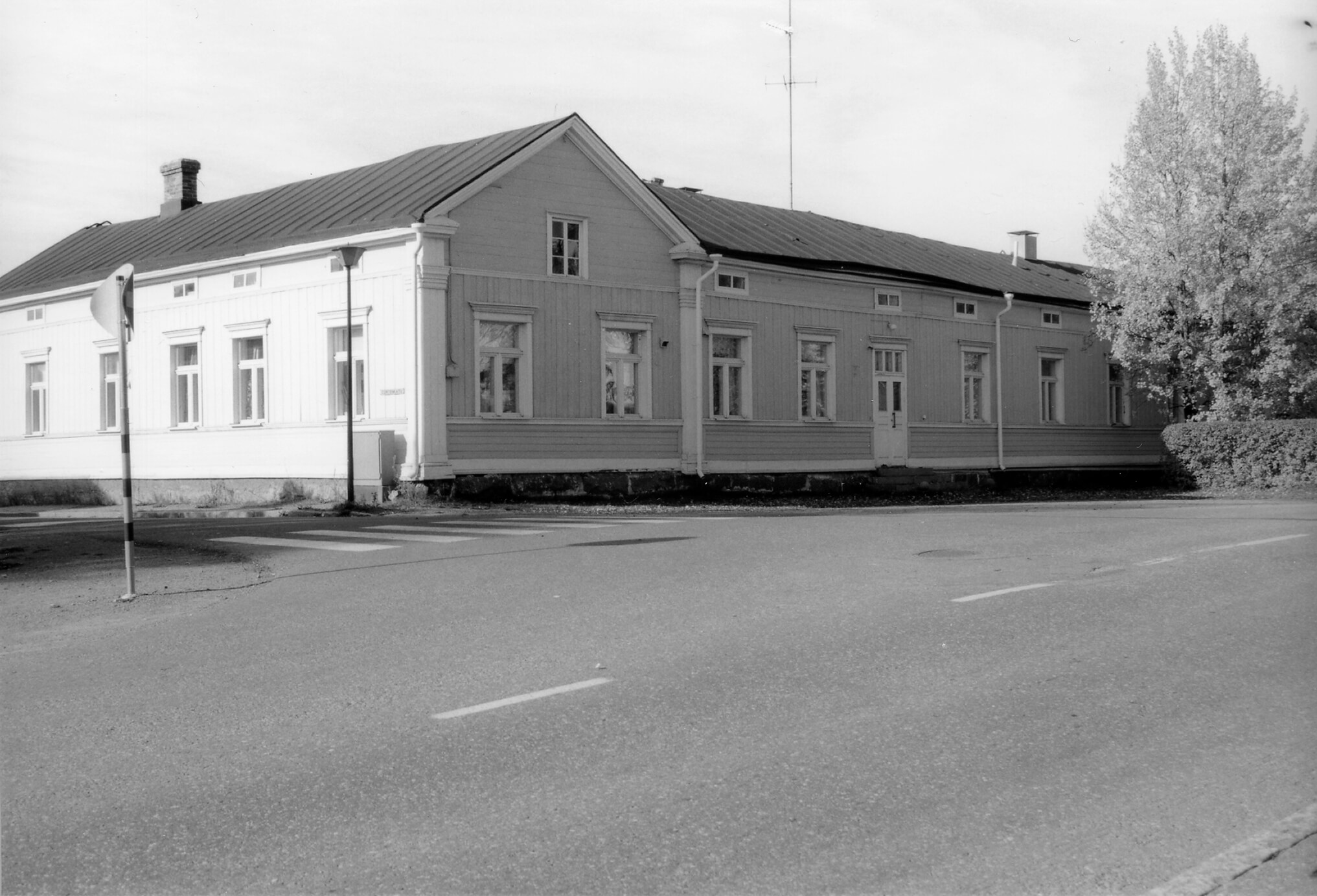
The pharmacy remained in the Wichman house until 1924, when Väinö Mäkinen moved it to Kauppakatu. The Mäkinen family operated it for 80 years. In 1999, its inventory was sold to the City of Raahe to establish a pharmacy museum. The collection, spanning over two centuries, is one of Finland’s most significant.
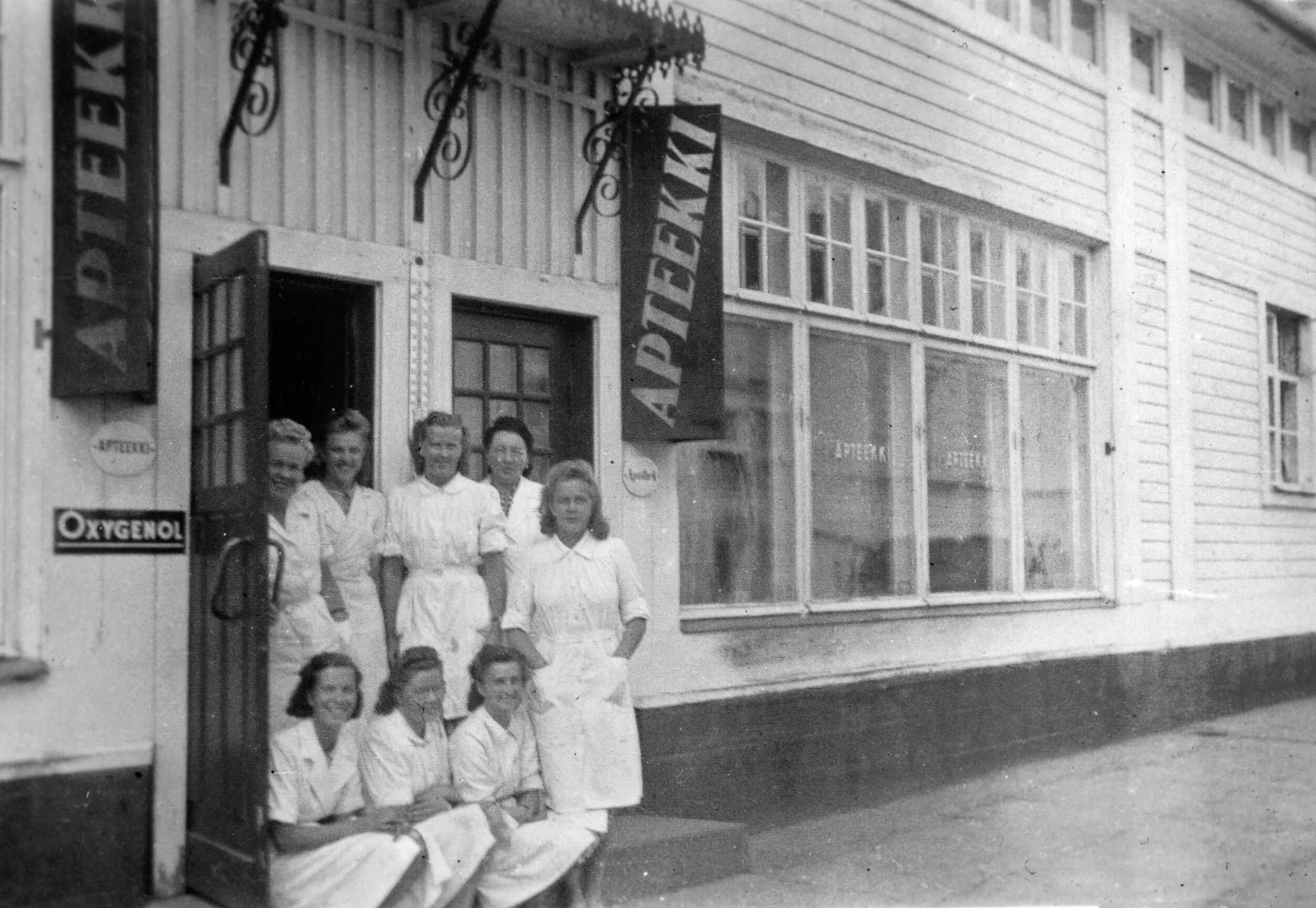
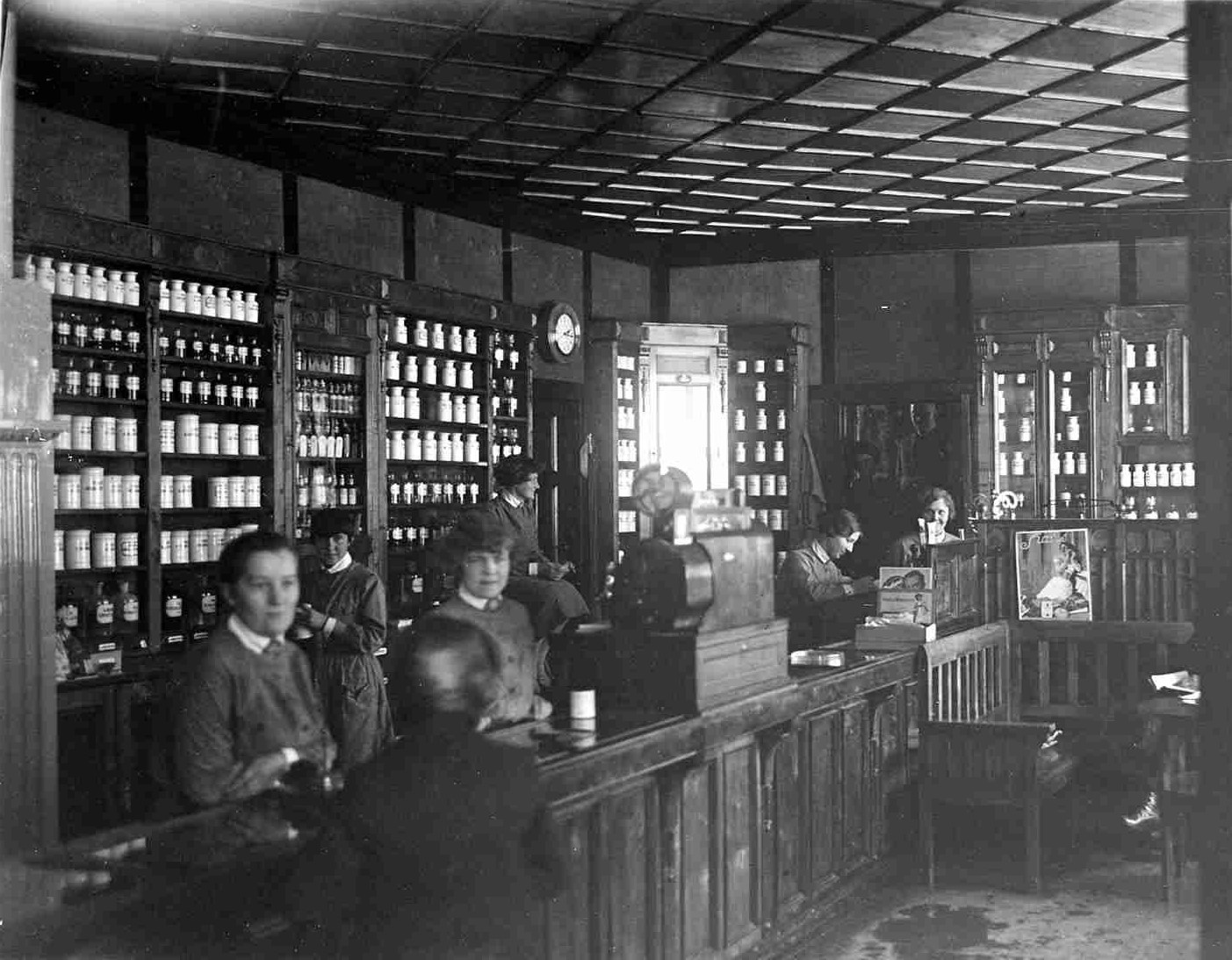
Carl Robert Ehrström moved to Raahe as a doctor in 1855. Known as a friend of J.L. Runeberg, Snellman, Lönnrot, and J.J. Nervander, Ehrström valued education and the accessibility of knowledge, especially for the lower classes. He also saw museums as beneficial. After becoming familiar with Raahe’s people and observing the unique and valuable items brought home by seafarers, Ehrström decided to establish the Raahe Museum in October 1862.
From the very beginning, the museum aimed to collect objects from all over the world. Seafaring was central to the identity of the people of Raahe, which was reflected in the museum’s collections. The museum showcased the residents' connections to distant lands, and its universal collections still distinguish it from today’s typical local museums.
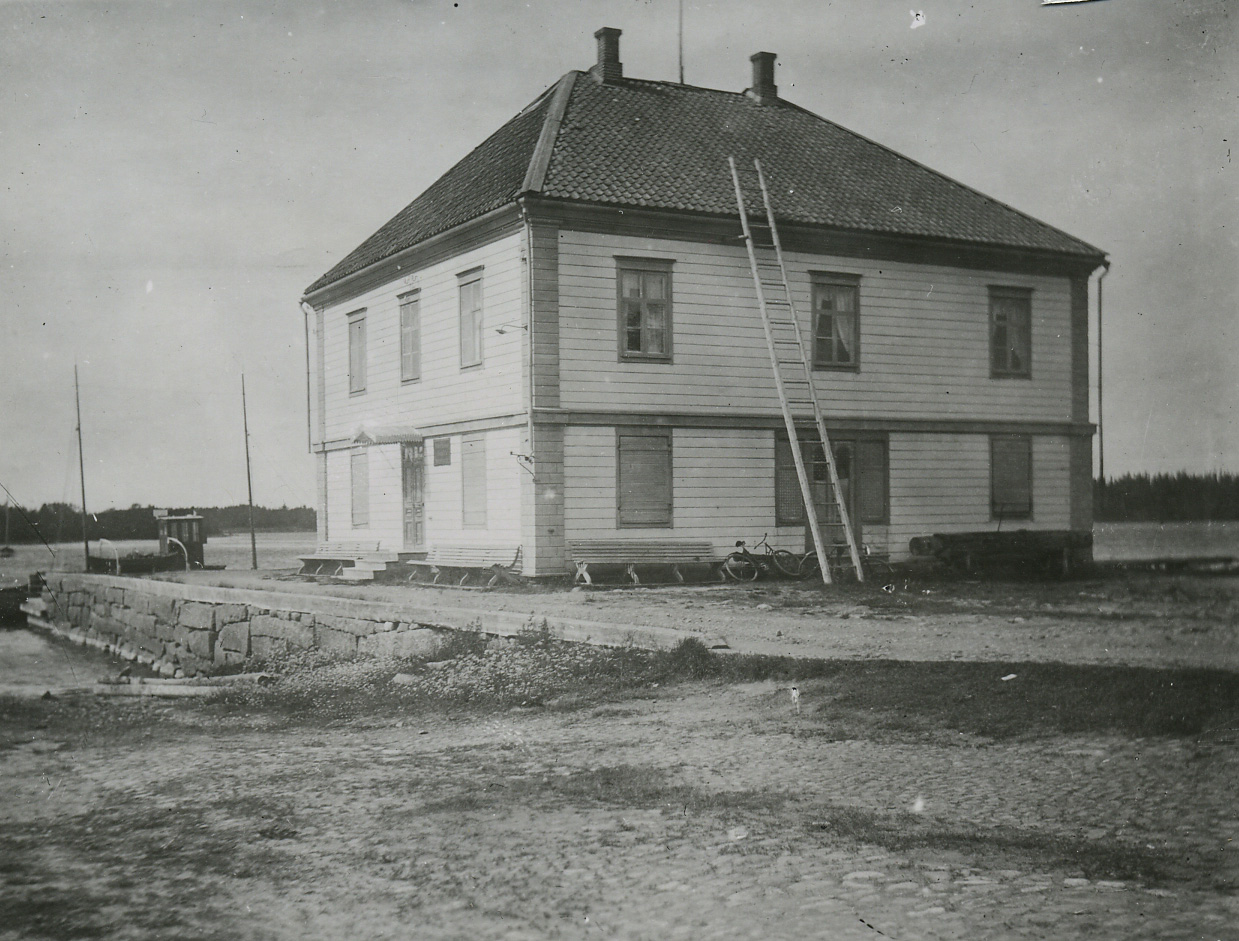
In the 1860s, Raahe was Finland's largest ship-owning town. Despite having only 2,500 residents, the people of Raahe owned as many as 60 large sailing ships. The Raahe Museum highlights this golden age through various exhibits, including around 30 sailing ship paintings, ship models, and nautical artifacts such as a log, oil bag, sailmaker’s pouch, and a captain’s medicine chest. The museum’s most famous artifact is The Old Gentleman, the world’s oldest surviving diving suit from the 18th century, donated by Captain Johan Leufstadius. Additionally, the museum displays 17th-century church sculptures by Mikael Balt, originally from Raahe’s old church.
The museum first operated in Ehrström's home, later moving to a primary school and then to the upper floor of the town hall. In the 1890s, as maritime activity declined, the museum relocated to the Packhouse. Initially, rooms were freed gradually, but by 1919, the museum occupied the entire ground floor, while the library operated upstairs. Since 1960, the Packhouse has been fully dedicated to the museum.
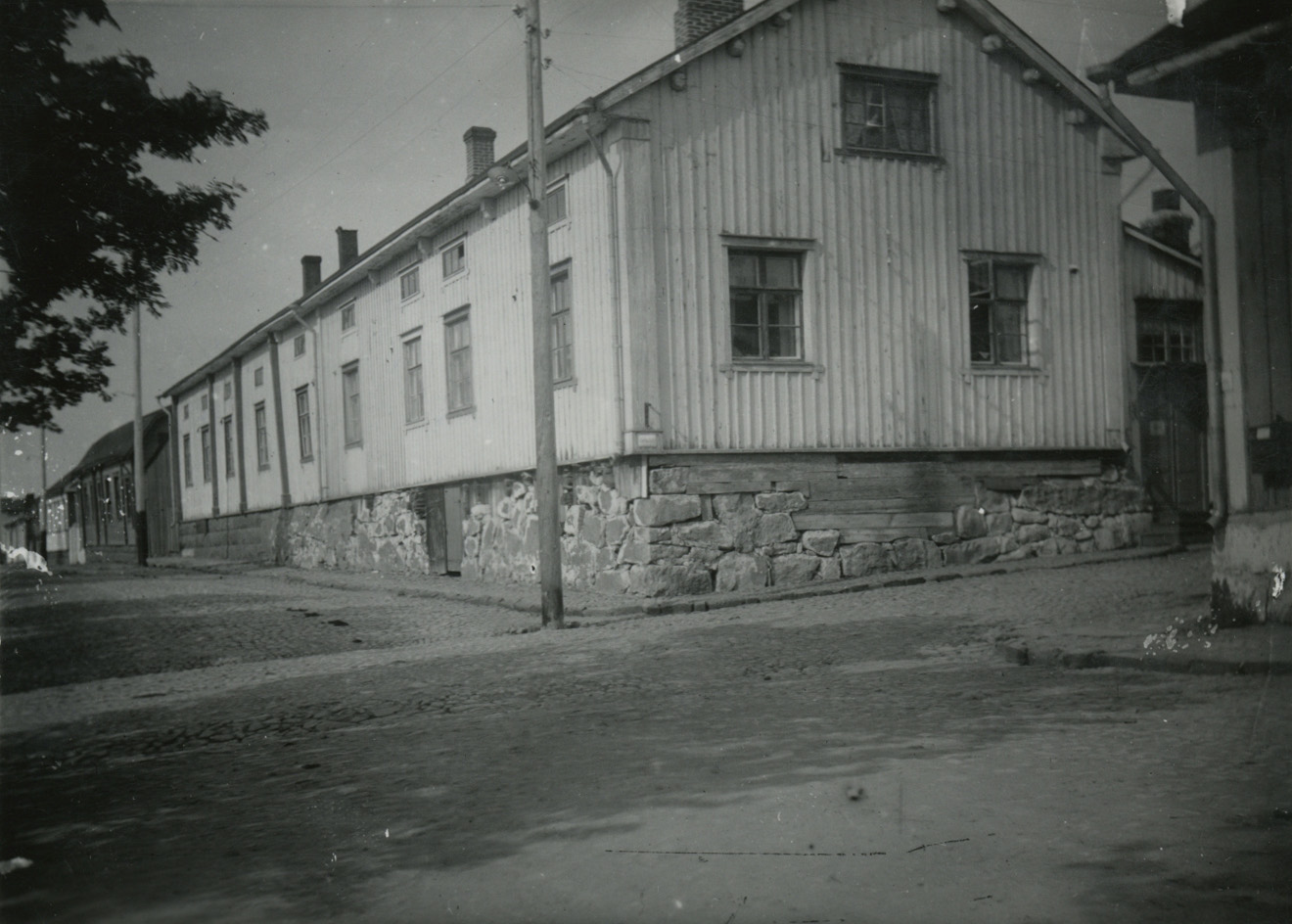
The Sovelius House, the oldest surviving residence in Raahe, escaped the town's devastating 1810 fire. Located on the site of Raahe’s first mayor Henric Corte’s grand mid-17th-century urban mansion, it became home to several mayors before merchant Matts Sovelius acquired it in the 1780s. A quintessential 18th-century bourgeois residence, the two-story house features a Carolinian floor plan and vertically paneled facades with decorative moldings.
The influential Sovelius family, prominent merchants and later shipowners, had been a pillar of Raahe society since its founding. Matts Sovelius built the house, later home to his daughter Kristiina and her Swedish husband Anders Myhrberg, Raahe's first customs officer. Their son, August Maximilian Myhrberg, gained fame as a soldier and patriot. Kristiina, known as "Raahe’s Library" for her intellect and culture, symbolized the family’s legacy of civic prominence.
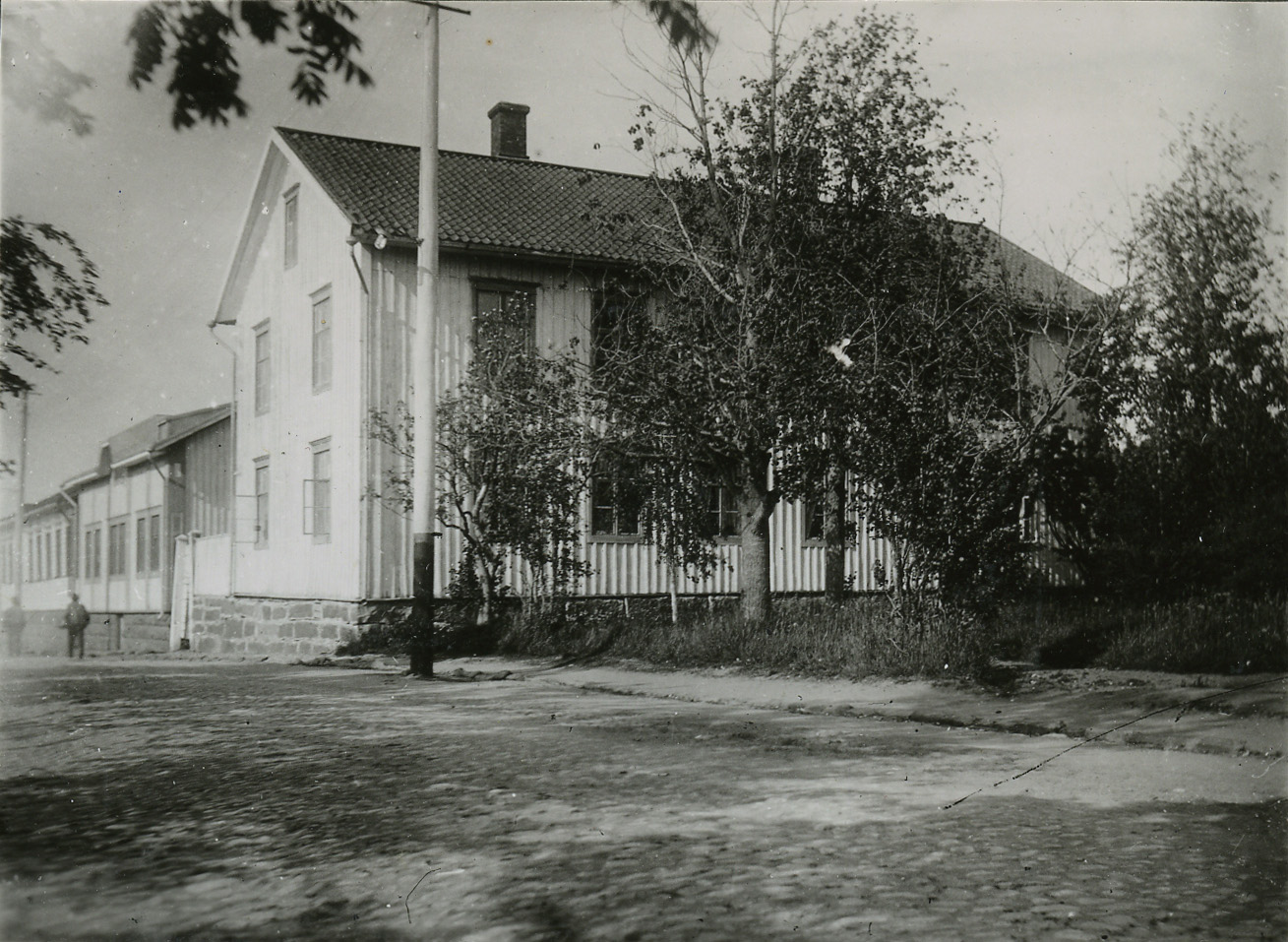
Matts’s eldest son, merchant Johan Sovelius, inherited the house. His unfulfilled love for his cousin Catharina Freitag is a poignant local legend. Denied marriage due to their kinship despite appeals to monarchs Gustav III, Gustav IV, and Alexander I, Johan and Catharina remained loyal to each other. They expressed their devotion nightly by lighting candles in their windows, now preserved in Raahe Museum. Johan, heartbroken, died years later by his window, with extinguished candles beside him. His spirit is said to haunt the house.
Later, Johan’s nephew, Fredrik Sovelius Jr., and his wife, Ebba Katinka Ljunggren, modernized the house in the 1890s. Ebba, a Swedish governess, married Fredrik despite their significant age difference. Under her influence, the home’s ceiling height was raised, windows enlarged, and its mansard roof replaced with a gable design.
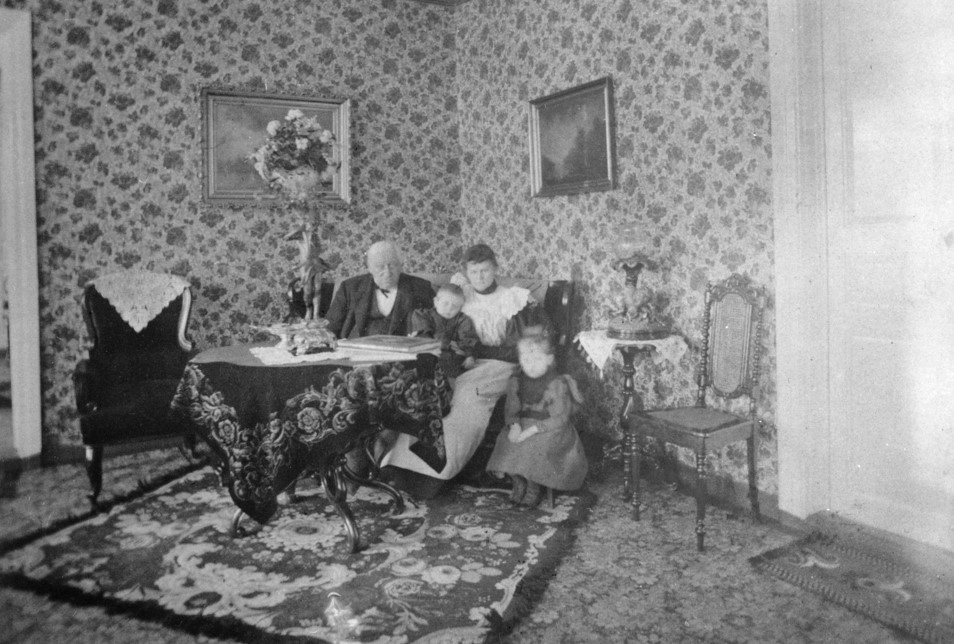
Patron Matts August Sovelius succeeded Johan as the owner. He and his brother Henrik, both lifelong bachelors, contributed significantly to the community. Henrik established the Sovelius Foundation in 1886, which still owns the property.
Since 1974, Raahe has leased the Sovelius House. It initially housed a music school and now functions as a museum. The upstairs features the "Shipowner’s Home" interior museum, showcasing bourgeois life over a century ago. The original Carolinian floor plan remains intact, and the upstairs has been restored to its 1890s appearance, complete with Jugend-style wallpapers reproduced using traditional silk-screen printing.
On the site of Raahe's first marketplace, next to the current Myhrberg Park at Brahenkatu 2, stood the town's first two town halls. In the great fire of Raahe in 1810, the town hall and the home of Fredrik Sovelius Sr. were destroyed along with many other buildings. Sovelius’s property was lost beneath the new "Large Square" (now Pekkatori). As compensation, he was granted the site of the old town hall, where he built a house in 1812.
Although constructing two-story wooden buildings was prohibited after the devastating fire, Sovelius built a partially two-story log house resembling a stone structure. On the park-facing side, between the second-floor windows, there is a clock, a nod to the clock tower of the old town hall.
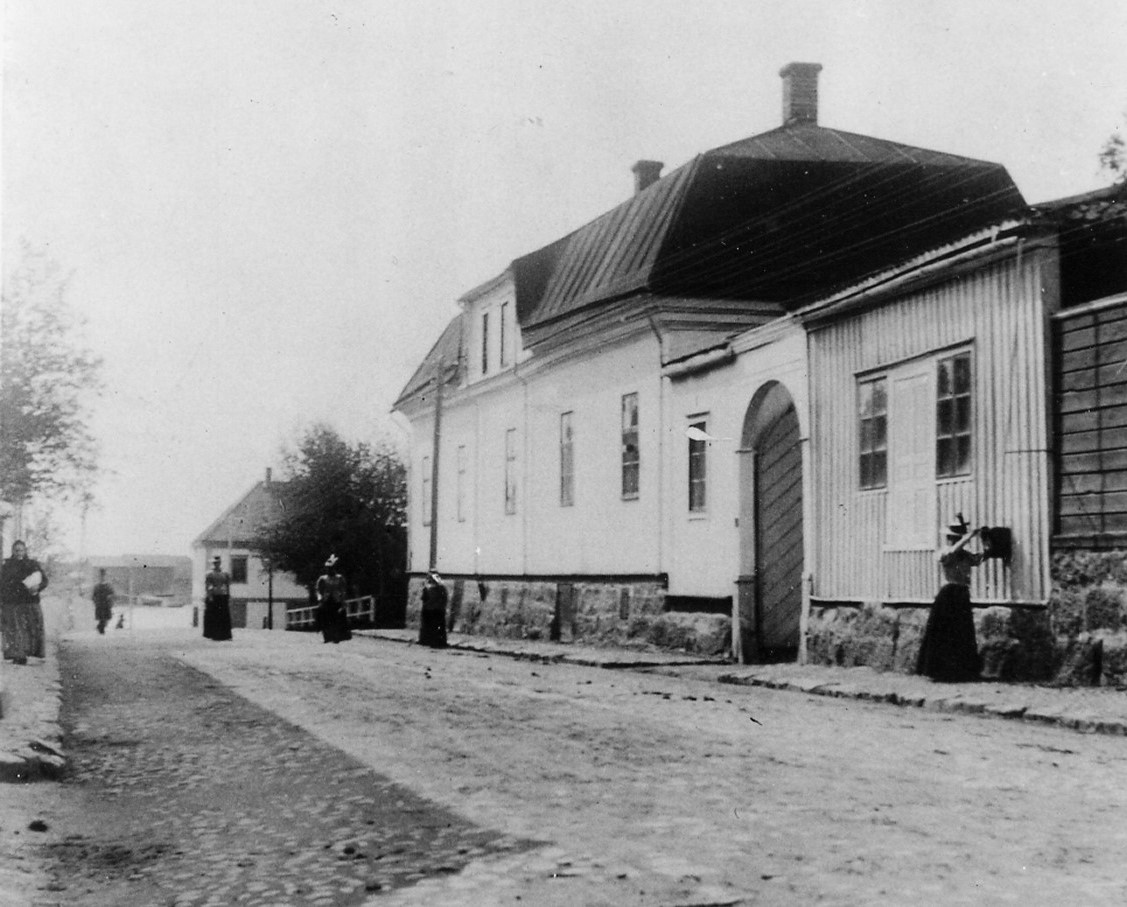
After Fredrik Sovelius, the house was owned by Matts August Sovelius and Henrik Sovelius III. Fredrik Wilhelm Sovelius inherited the property, and upon his death in 1906, ownership passed to Jarl Sovio. Jarl Sovio sold the house to Antti Pietilä in 1923. Under Pietilä’s ownership, the building housed both businesses and rental apartments.
The City of Raahe purchased the house from Pietilä’s heirs in 1980. The building has been named Heikku's House after Henrik (Heikki) Sovio. Henrik Sovio was one of the prominent patrons of Raahe’s golden age. Together with his brother Matts August, he ran a successful shipping and trading business, and earlier in his career, he had worked as a ship’s captain.
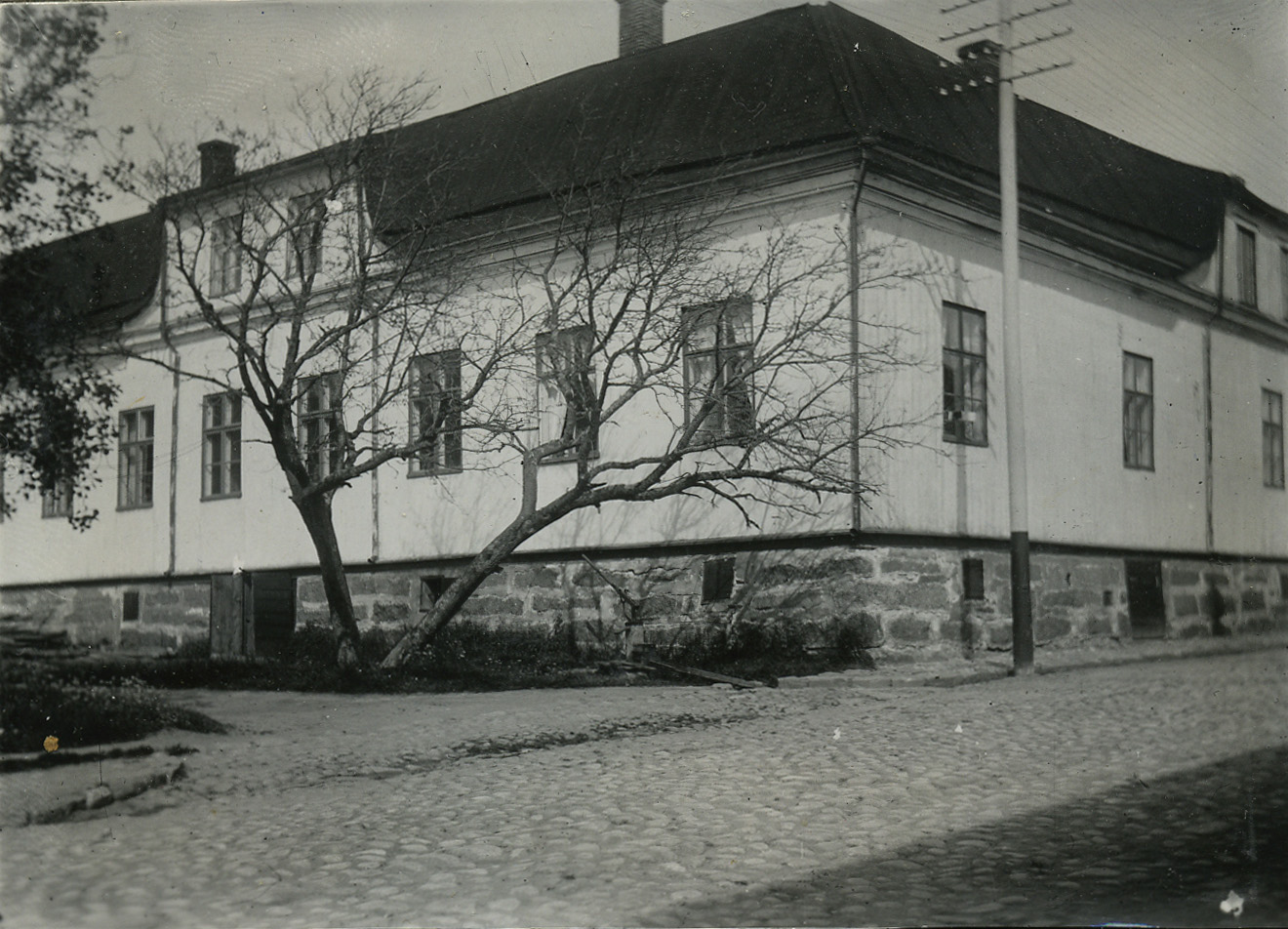
Heikku's House retains a rare example of a traditional enclosed courtyard, accessible through one of the few original gates still in its historical form. The courtyard is surrounded by storage buildings and residential quarters, which have been restored externally while the interiors have been modernized. Renovations have aimed to preserve as much of the old structure as possible. Today, the building houses a music play school, offices for trade unions, and city reception rooms.
In September 1819, Emperor Alexander I of the Grand Duchy of Finland, then part of the Russian Empire, visited Raahe. The townspeople were eager to make a good impression during this prestigious visit. The town magistrate decreed that all bridges and fences were to be repaired, unpainted public buildings and houses painted, and all pigs and cattle removed from the town for the duration of the emperor’s stay.
Alexander I was accommodated in the house of Johan Frieman, a town councilor and merchant, as it was deemed the most suitable for the occasion. The house is located by the edge of Pekkatori Square. When the emperor arrived at the house and greeted its residents, he kissed the forehead hair of three-year-old Jannika, a member of the Frieman family. These strands of hair, which received such an illustrious honor, were preserved and woven into a piece of hair jewelry that is now on display at the Packhouse Museum.
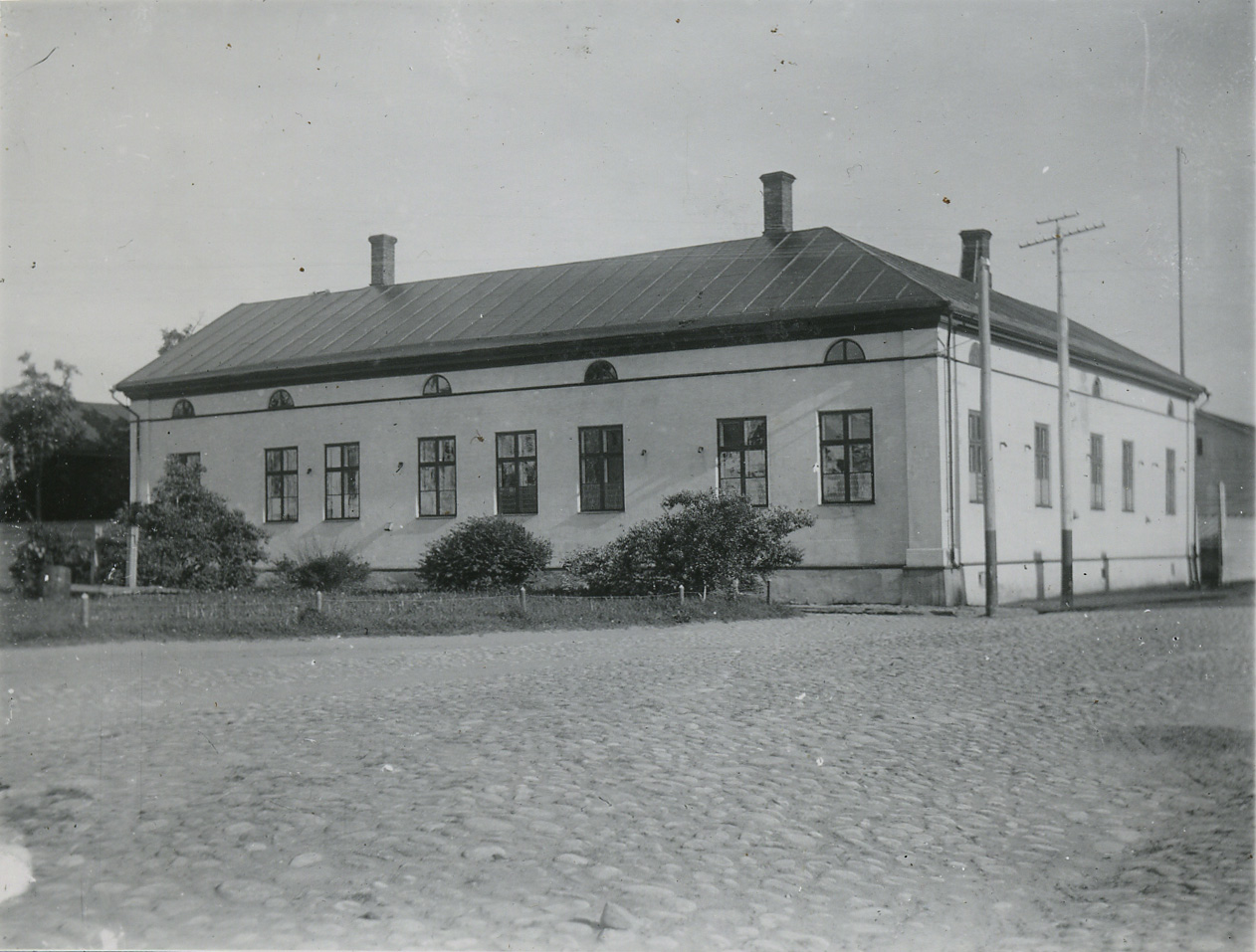
Frieman’s eldest daughter, Carin Seraphia, became enamored with the emperor. The next day, as Alexander I continued his journey, he gifted Johan Frieman a diamond ring as a token of gratitude. When the emperor passed away in 1825, Carin used the gifted ring to etch her name, the emperor’s monogram, and the year of his death onto a windowpane in her home. This pane of glass is now exhibited at the Packhouse Museum. Carin later married Carl Gustav Swanljung, and the couple had seven children.
Over the years, the Frieman House has served various purposes, including as a primary school, library, and office space. Today, it houses the Raahe Youth Services.
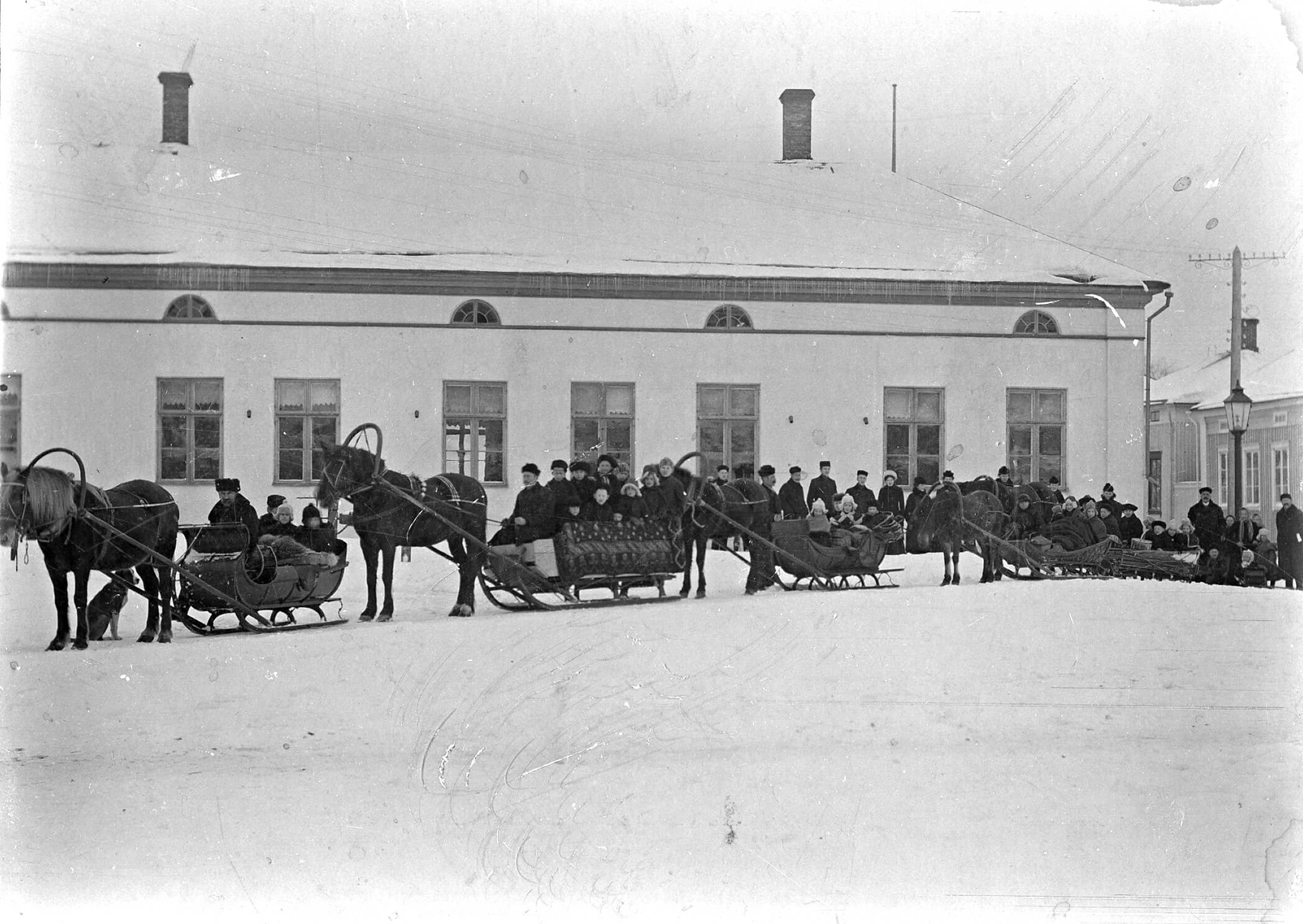
In 1810, merchant Johan Lang's house was destroyed in the great fire of Raahe. Determined to rebuild, he acquired two plots on the northwest corner of the newly reconstructed town square. On these plots, Lang first constructed a side building, known as the lower manor, and later an impressive main building. The lower manor housed two shops, accommodations for a sea captain and shop assistants, a brewery, and lodging for farmers who came from the countryside to trade. The main building, referred to as Lang’s House, served as the merchant family's home and business center, where wholesale trade was conducted both nationally and internationally.
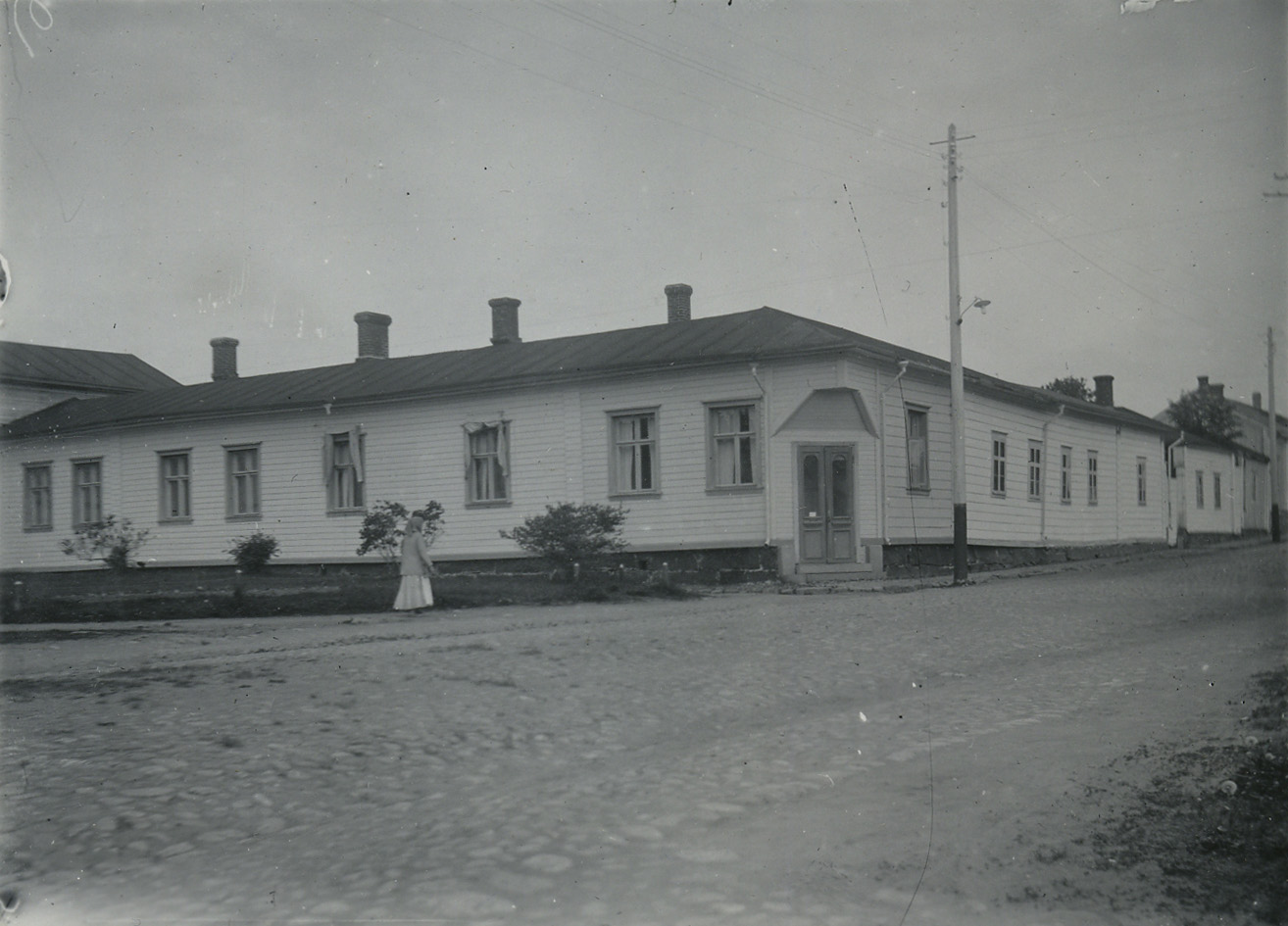
Trade House of Lang epitomized the typical coastal trading enterprises of the time, engaging in domestic and international trade, shipbuilding, and various related industries that supported maritime commerce. Johan Lang was a wealthy and influential figure in Raahe; his assets ranked among the four largest merchant fortunes in Finland, and his business was the largest merchant house in Northern Finland. The company owned sailing ships, sawmills, and ironworks, becoming Northern Finland’s leading iron manufacturer in the 1820s and 1830s.
The trade house was passed down through family ties, from Lang to his son-in-law Zacharias Franzén, and later to Fredrik Sovelius the Younger. Marriages between Lang’s daughters and members of the prominent Oulu-based Franzén family united two significant merchant dynasties of Northern Finland. Despite its success, Trade House of Lang declared bankruptcy in 1934. Nonetheless, the legacy of its merchants and their wives, particularly the women of the "Franzén era," left an indelible mark on Raahe's history.
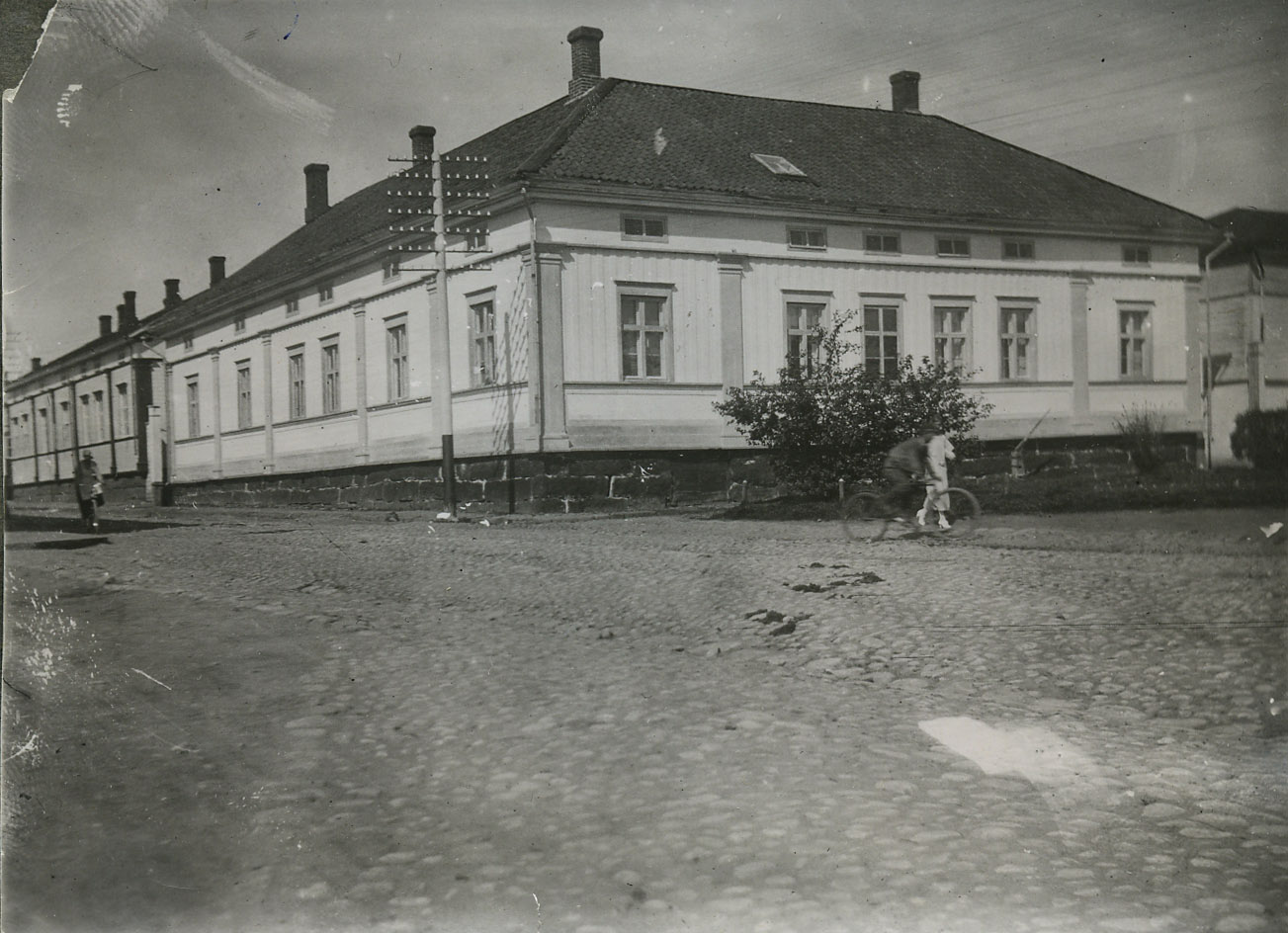
Before 2016, the buildings housed various businesses and city offices. In the mid-1970s, the city of Raahe acquired the property, repurposing it for municipal functions. Entrepreneurs Piia Vähäsalo and Pasi Siipola purchased the site in 2016 and began extensive restorations. They revitalized the property into one of Raahe’s most renowned attractions, honoring its history by naming it Langin Kauppahuone (Trade House of Lang).
Today, Trade House of Lang reflects its 19th-century origins. The original courtyard buildings include the main house, lower manor, a stone warehouse, scales room, and granary. The lower manor now hosts a café, shop, kitchen, banquet halls, and hotel rooms, while the main house offers additional hotel accommodations, a boutique, offices, and a grand banquet hall. Trade House of Lang continues to celebrate Raahe’s rich maritime history and the stories of its sailing era luminaries for future generations.
Since the late 19th century, traveling film screenings have been a part of Raahe’s cultural life, especially during spring and autumn markets. The city’s first cinema, Raahen Eläwät Kuwat, was founded in 1909 by Captain August Kangas, industrialist Tor Sovio, and printer-merchant Robert Roihu. The theater operated in Roihu’s building at Kauppakatu 30 until 1911, after which cinema activity in Raahe briefly declined.
In 1918, Consul August Ossian Swanljung, postal officer Mikko Ryhänen, and customs officer J. Lindholm established Oy Näytös, which operated in the courtyard building of the local club until 1922. A year later, businessman Kalle Siponen founded Huvimylly, which initially screened silent films with live music accompaniment in Roihu’s old building.
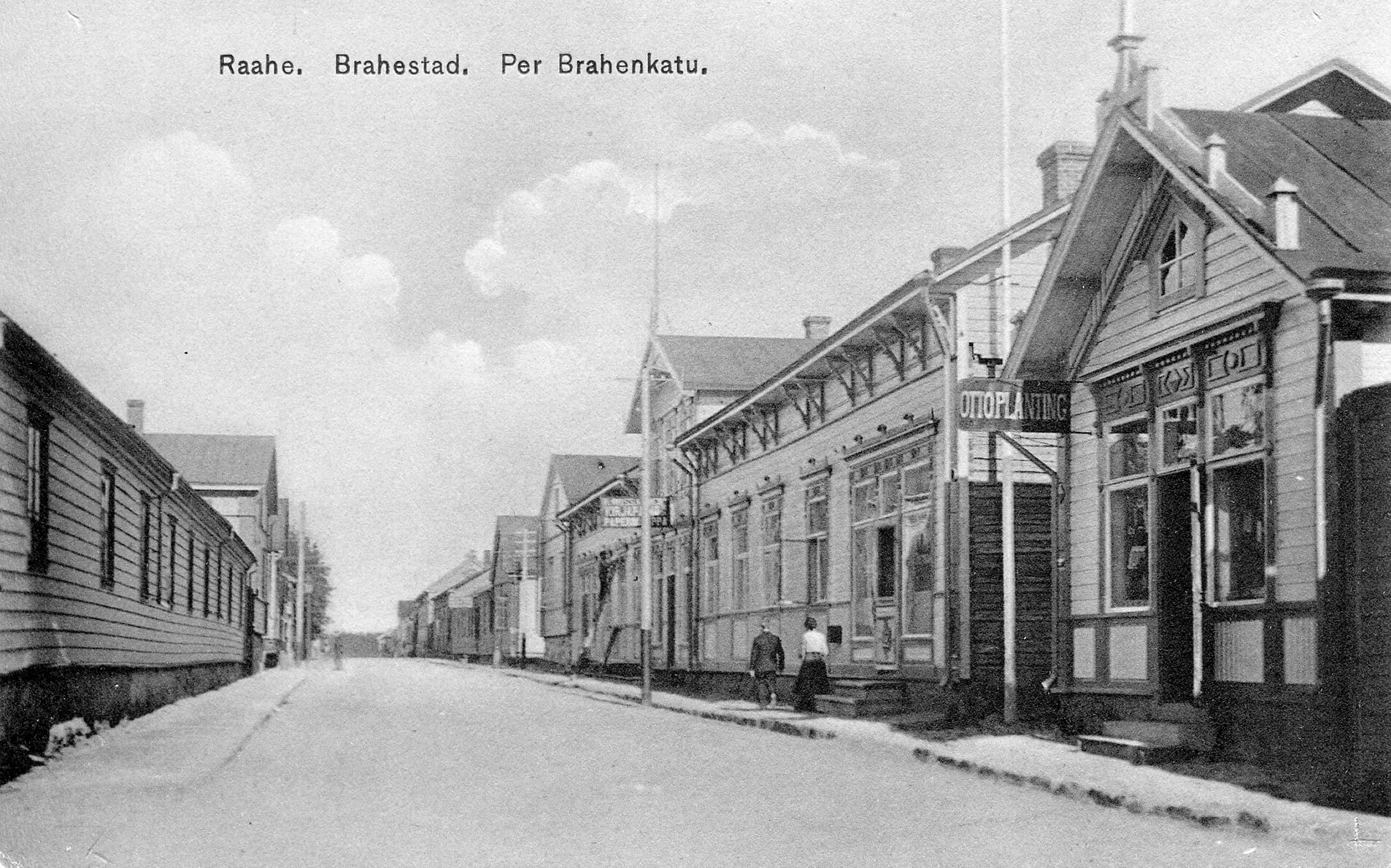
In 1937, a dedicated cinema hall for Bio Huvimylly was built, offering over 300 seats. During World War II, screenings were always full, and in the post-war years, Finnish films were popular. For some, even viewing movie star photos in the theater’s lobby was an experience when tickets were unaffordable.
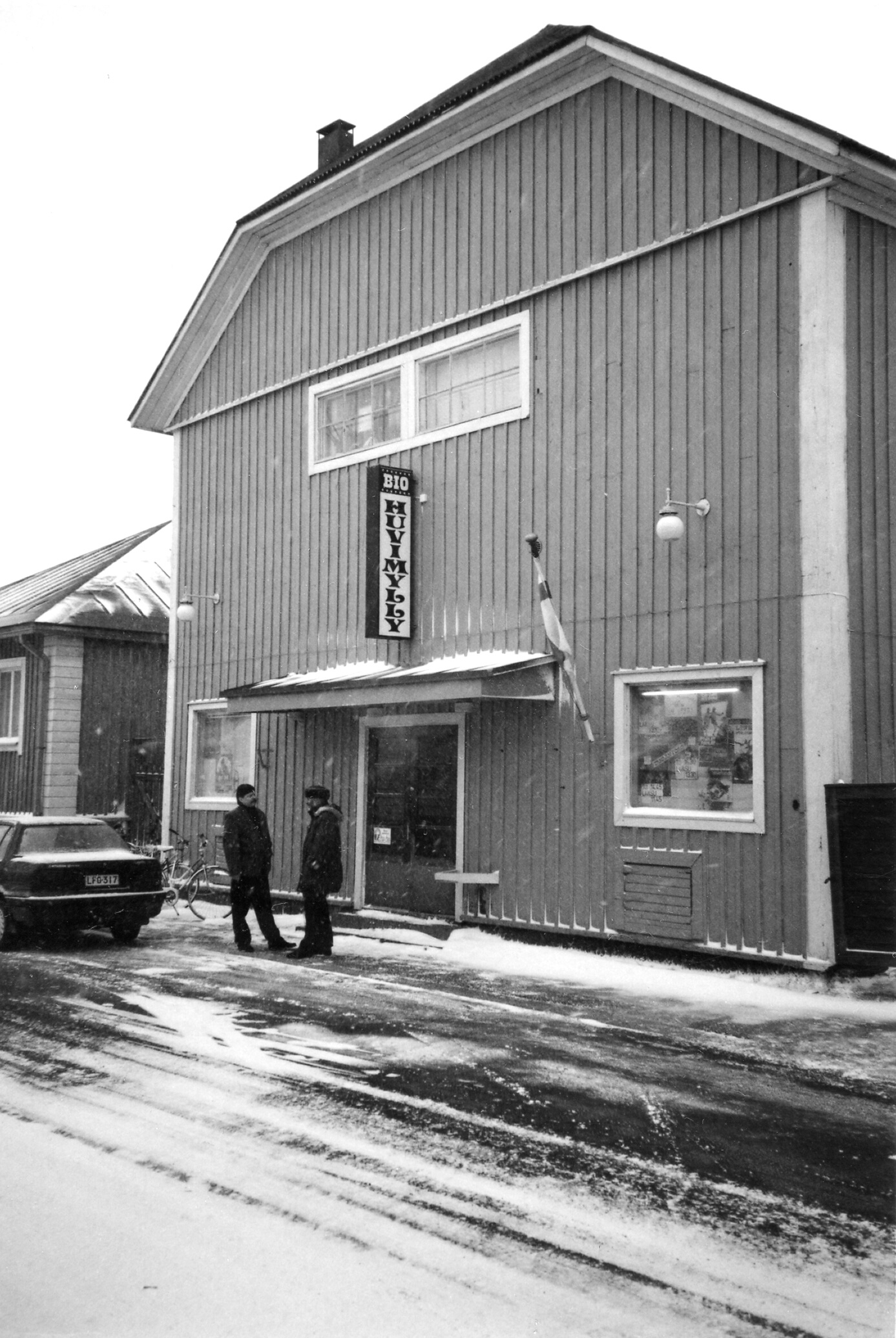
In the 1950s, the machine operator was Pentti Sarkkila, who taught his successor, Tapio Kivinen, in the 1960s. At the time, films arrived in metal canisters and were shown using two projectors to ensure seamless reel changes. Kivinen remained in the role for over 20 years.
In 2004, Juha Koistinen took over Bio Huvimylly. Plans for renovations existed, but funding was an issue. Eventually, the cinema closed in 2011. After more than a decade of dormancy, cinema culture in Raahe revived in 2024 with the opening of Kinosalonki Sofia, housed in a building that had previously operated as a girls' school for 125 years. It is run by the Cultural Association Bio Huvimylly, with Tatu Hirvonen as manager.
Currently, the Bio Huvimylly building is owned by Bio Huvimyllyn pelastajat ry, which plans to restore the long-vacant space. The future goal is to host film screenings and concerts once again.
The Leufstadius House, located at the corner of streets Cortenkatu and Rantakatu, is one of the oldest residential buildings in Raahe. It was built by Johan Levonius in 1804. The house was later purchased from him by Mayor Westman.
The next owner was Johan Leufstadius, who was drawn to Raahe by its growing maritime trade. In 1841, he added a wing on the Cortenkatu street side. After leaving the maritime industry, Johan decided to establish a tobacco factory in 1848. The smaller building on Cortenkatu street housed the tobacco factory.
The factory employed boys who were called "tobacco angels," usually numbering between four and ten. All types of tobacco products were manufactured there. The workday started at five in the morning and lasted until eight in the evening, with a couple of hours for meals. The factory owner himself did not engage in production work; instead, he prepared the tobacco leaves by washing them and then supervised the workers while smoking tobacco.
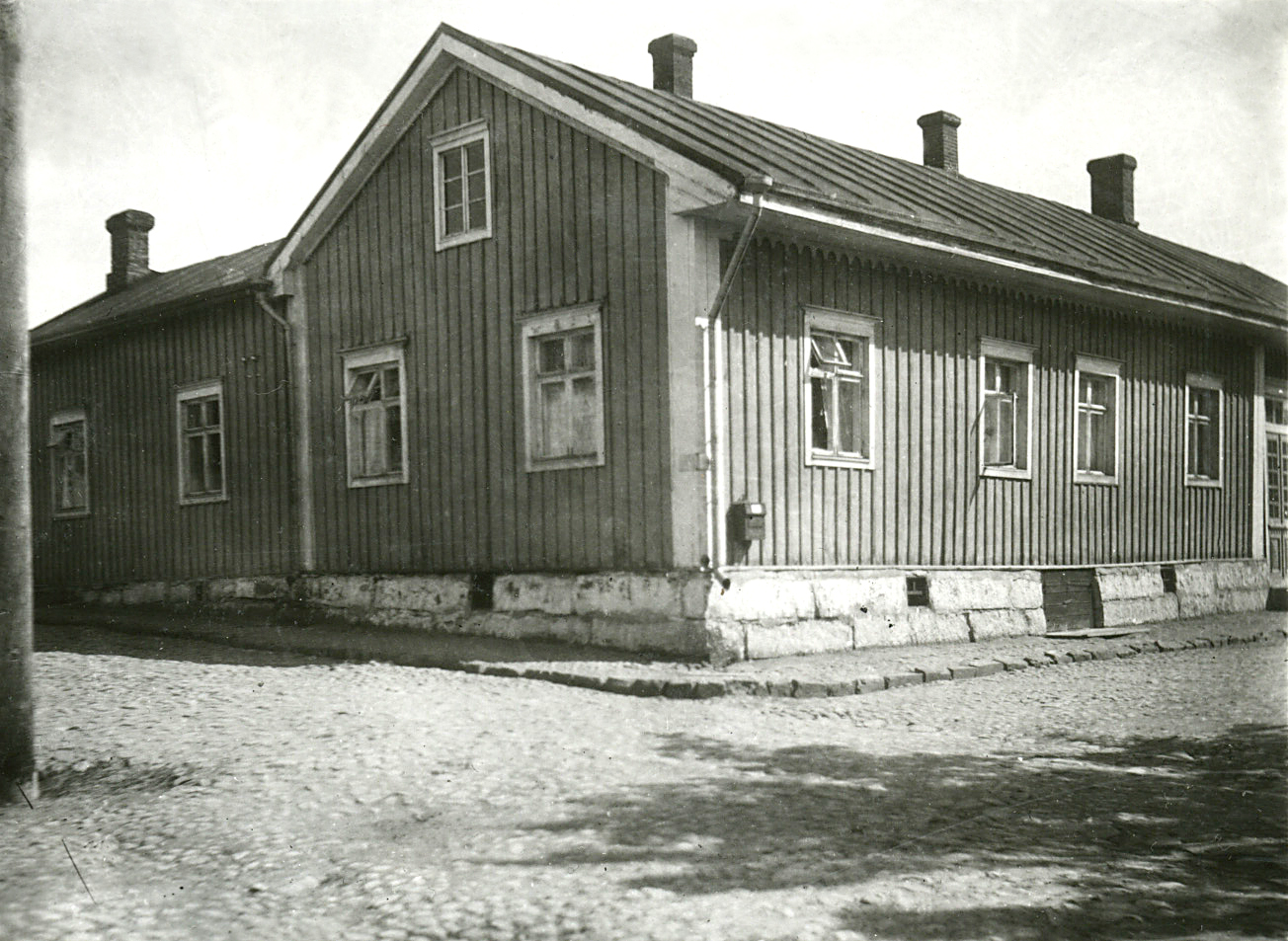
Johan Leufstadius and his wife had four children. One of them, Captain Hans Johan Leufstadius, remained in the house with his sister Anna. After retiring from sailing, Hans Leufstadius participated in business and municipal affairs. He donated several items to the Raahe Museum, including the famous diving suit known today as The Old Gentleman. He lived in the family home unmarried, alongside Anna, until his death. The siblings bequeathed the house and its furnishings to serve as a retirement home for gentlewomen. It began operating in the autumn of 1909 and continued for several decades.
Olavi and Sirkka Heiskanen purchased the house in 1997. They received the Viisikanta Award in 2008 for their restoration work on the Leufstadius House. In 2024, the house was recognized as the "House and Environment of the Year" in Old Town Raahe.
The Swanljung House and Courtyard are located at Brahenkatu 21. Merchant Daniel Jurvelius built the house in 1815 on the newly planned Stora gatan after the Great Fire of Raahe. In addition to the main building, the property included a workers' cottage and outbuildings, forming a traditional enclosed courtyard. The shop was located at the end of the house. Additional rooms were built between the main house and the workers' cottage in the early 1900s.
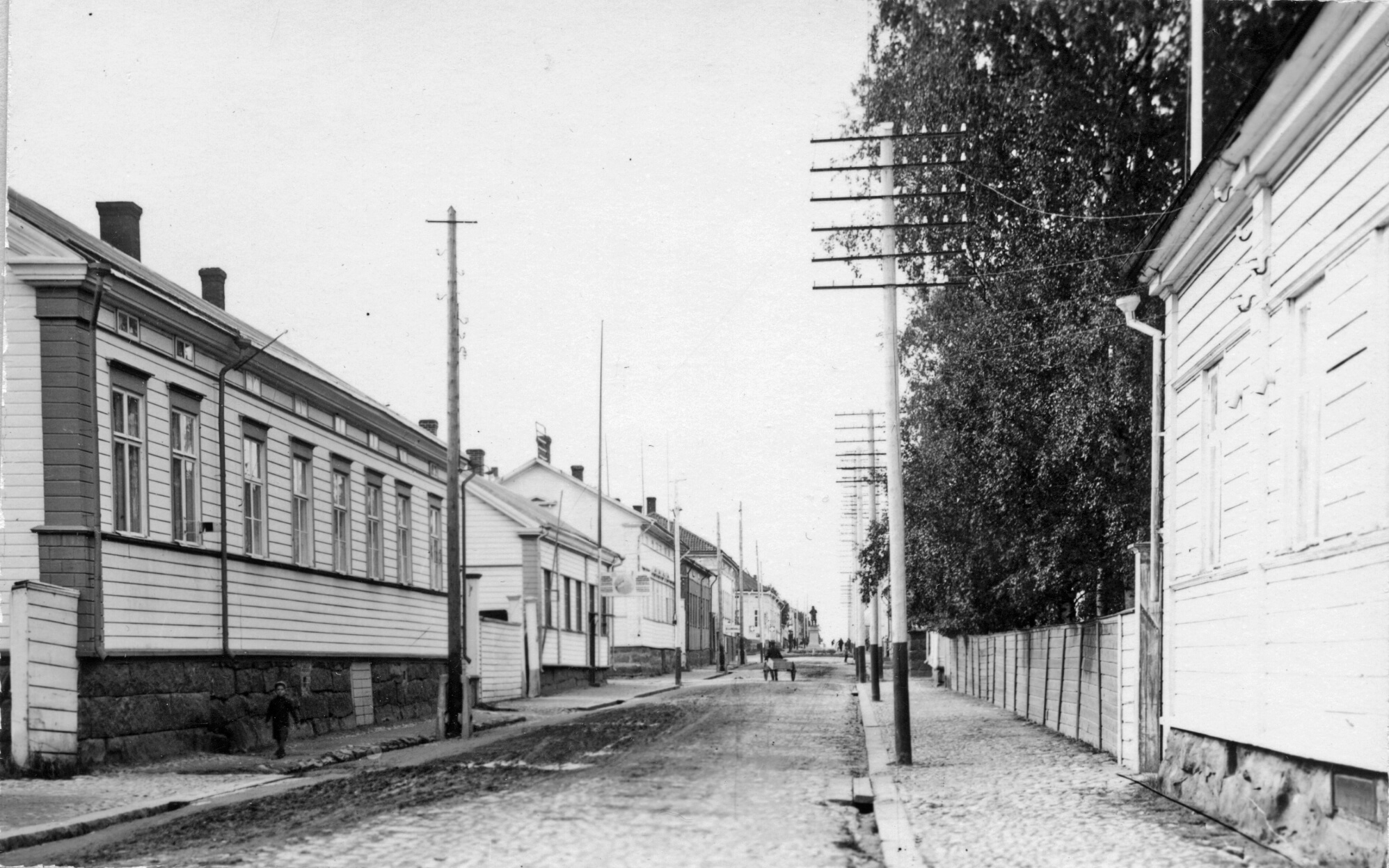
In 1830, the house was purchased by tanner Karl Stenman, whose daughter Matilda later inherited it. Matilda married Mayor Albert Luoma, but when Albert was appointed assessor at the Turku Court of Appeal, they sold the house. In 1909, the property was bought by veterinarian Johan Swanljung and his wife. The couple took in Gertrud, an orphan, as their foster child.
On the neighboring property, Guy Swanljung worked as a ship broker. In the 1950s, he had to change careers due to the decline in timber exports and started a photography studio. Many residents of Raahe remember Guy’s school photographs. Guy married Gertrud, and they lived in her childhood home.
Today, the house is home to Johan’s grandchild, Bert Johan Swanljung, and his siblings. The house has been renovated but remains in its original condition. The room layout has been preserved, and many pieces of furniture date back to Johan’s time. The Swanljung family has been awarded the Viisikanta Medal for maintaining the courtyard in its original form. Additionally, the house was named Old Town Raahe’s House of the Year in 2017.
Anna Antell was widowed at the age of 22 when her husband, ship captain Johan Antell, drowned during a sea voyage in 1842. Determined to support herself, Anna decided to establish a bakery, using recipes she had acquired from overseas.
At first, the Antells lived in a house in the center of Raahe, at what is now Kauppakatu 34. Later, Anna and her maid moved to a rental apartment in coppersmith Söderberg’s house on Aitakatu (near the middle of the block between present-day Koulukatu and Brahenkatu, on Palokunnankatu).
In 1869, a 19-year-old woman named Katri Pyhtilä began working as Anna’s maid and quickly became a skilled baker. After Anna’s passing, her son Johan Petter married Katri. Anna had left behind debts, which the couple had to manage. They moved to Siikajoki, where they ran a rural store. However, after the store went bankrupt, they relocated to Oulu. There, Katri founded her own bakery, which rapidly expanded into a café and catering service.
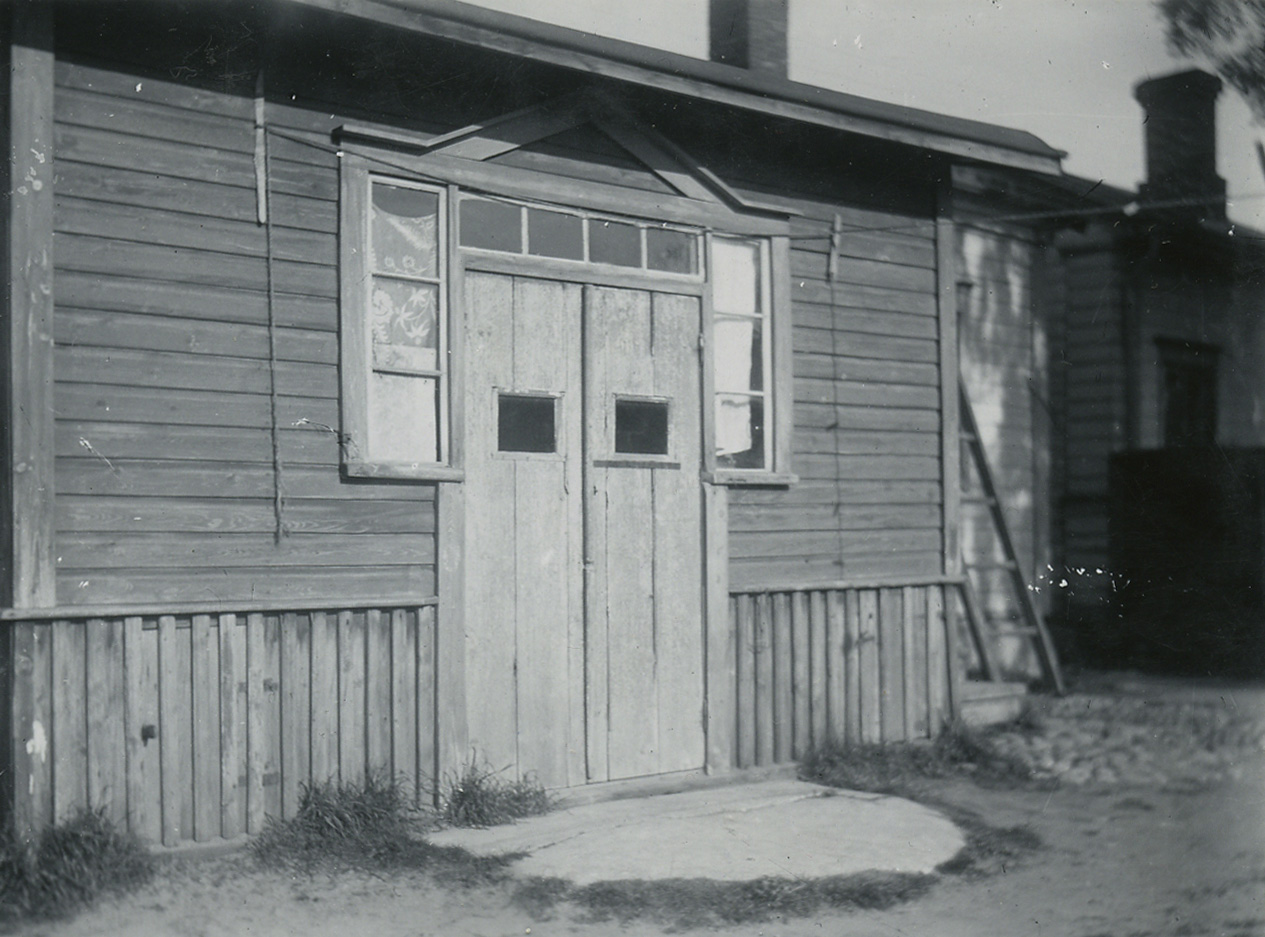
The Antell success story continues to this day. Although the bakery business ceased operations in 2018, Antell now operates 60 restaurants across Finland.
The statue of August Maximilian Myhrberg stands proudly in the middle of Myhrberg Park, located next to the Sovelius House and the Heikku House. Myhrberg is the only person from Raahe to have a statue erected in his memory. The statue, unveiled in 1931, was created by sculptor Evert Porila. The project was initiated by the Raahe Local Heritage Association.
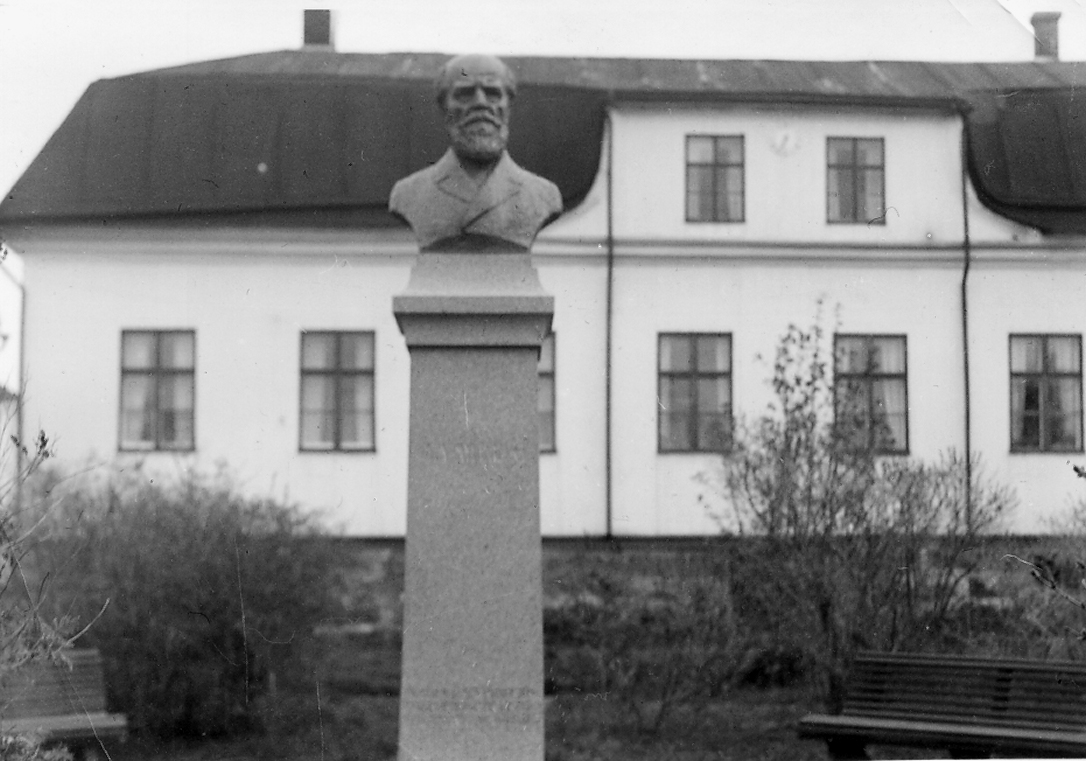
Myhrberg was born in the late 18th century in the Sovelius House. His mother was Kristiina Sovelius, and his father was Anders Gustaf, who was of Swedish origin.
Myhrberg spent most of his life outside the borders of Finland. His calling was to be a soldier, and he became known for fighting on the side of the oppressed in various wars. He took part in the Spanish Civil War, the Greek War of Independence, and the Polish Uprising, among others. He gained the most fame for fighting alongside the Philhellenes in Greece against the Turks.
Industrial counselor John Grundström was born in Raahe in 1877 and spent his childhood and youth there. He attended the Raahe School of Business before setting out into the world to seek his fortune. Grundström quickly advanced in his career and eventually became the CEO of Suomen Sokeri Oy (Finnish Sugar Company), earning him the nickname "Sokeri-Jussi" (Sugar-Jussi).
Grundström married Fanny Maria Burman from Raahe, and the couple had five children. Although his career took him away from Raahe, the town remained dear to him. The family often spent summers there, owning several houses at what is now Härkäkulma and a villa in Ulkofantti.
In 1932, Grundström donated the Defender Statue (Puolustaja-patsas) to Raahe. The donation deed required that the Härkätori square, which was in its natural state, be transformed into a park and that the Defender Statue be erected there. Funds left over from the Myhrberg statue project were used to renovate Härkätori. At the time, the Defender Statue caused a sensation due to its nudity. The statue was created by sculptor Johannes Haapasalo from Mikkeli.
However, the story of Härkätori dates back to the 1810s, following the great fire of Raahe. When the market square was relocated from Isotori in connection with the erection of Count Pehr Brahe's statue, livestock markets were moved to Härkätori. On market days, the square was filled with noise, as hundreds of cows and bulls were brought in by farmers. Cattle buyers from all over Finland gathered to trade. One end of the square featured an entertainment corner, including a carousel, an organ grinder, and sometimes even a circus. In their free time, young people often gathered at Härkätori to socialize, play ball games, or participate in traditional Finnish games like viimeinen pari uunista ulos ("last pair out of the oven"). Sometimes, boys would even engage in wrestling matches.
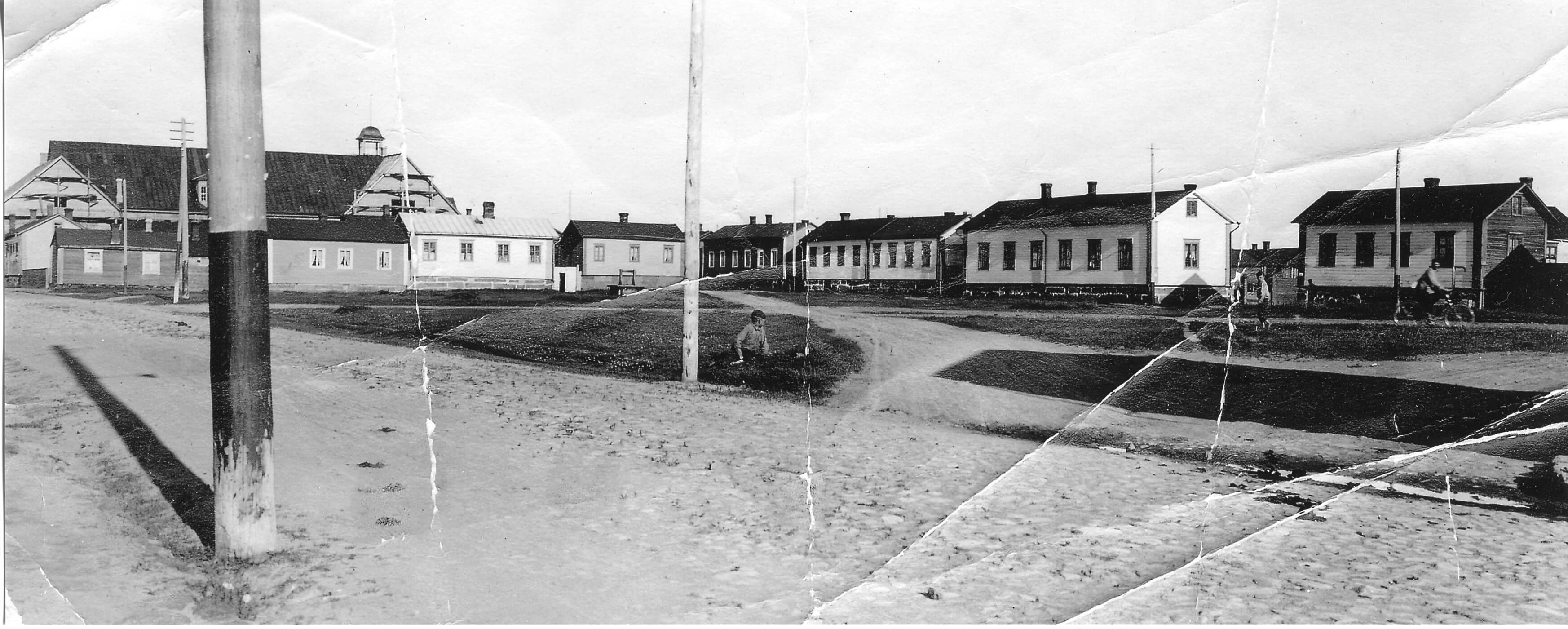
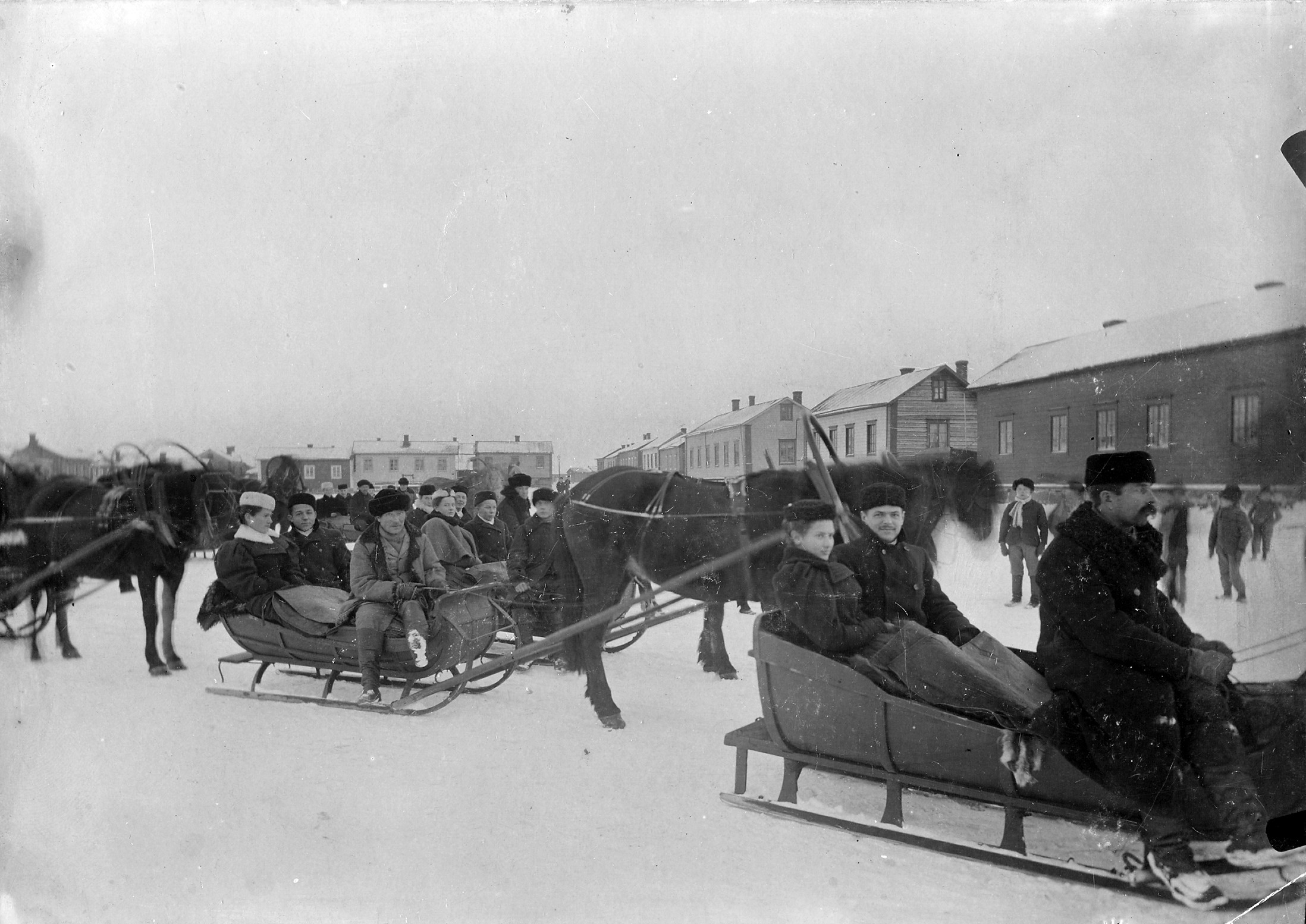
By the 1940s, Härkätori was known as "Autotori" (Car Square) because it housed a bus station, a transportation hub, and a gas station. In the 1960s, the bus station was moved elsewhere, and the square’s name was restored to Härkätori.
Petter Anton Holmqvist moved to Raahe from Sweden. He settled at the corner of Aitakatu and Menzerinkatu (now Palokunnankatu and Koulukatu). Holmqvist ran a painting business, a foundry, and even a liquor shop. In addition, he raised pigs and cats.
On his deathbed, Holmqvist bequeathed his entire estate to the orphanage that the Raahe Ladies' Association had established for poor children in 1867. For the next 30 years, the orphanage operated in Holmqvist’s home. Initially, only girls were admitted. The orphanage could house more than 10 children at a time. Some children stayed only a few months due to illness or other difficulties at home, while others spent their entire childhood there. In such cases, the association provided them with vocational training.
In 1906, an additional room was built in the house to serve as a sickroom. It was often used by outsiders as well, functioning as a wartime elementary school and a maternity care facility. During the war, the entire building temporarily operated as a military hospital, and the children were relocated to Pattijoki.
The house was renovated in the late 1950s. A new playroom and a chamber for the caretaker were built, the kitchen was remodeled, and the hall was converted into two children's rooms. When the orphanage ceased operations after 114 years, the local newspaper Raahelainen purchased the building in 1982. Since 1995, the house has been used as a residence.
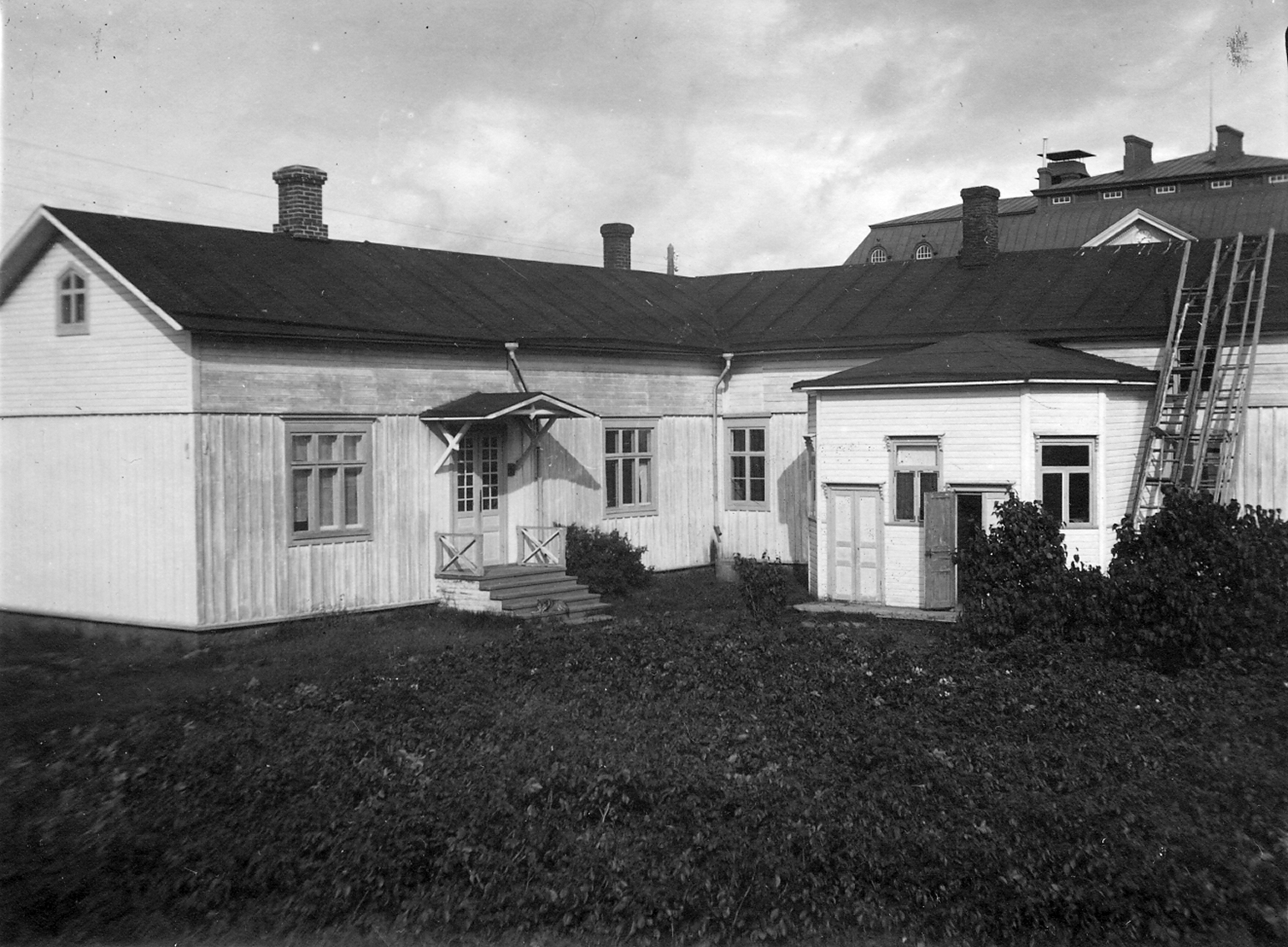
Reiponkatu was a street for craftsmen in the 19th century. "Reippo" means a ropemaker, which was an important profession during the age of sailing ships. The rope master worked on the street. Along Reiponkatu, there were crank mechanisms at intervals, supporting the spinning of the rope. Children often watched the work and, to tease the master, would run back and forth under the rope.
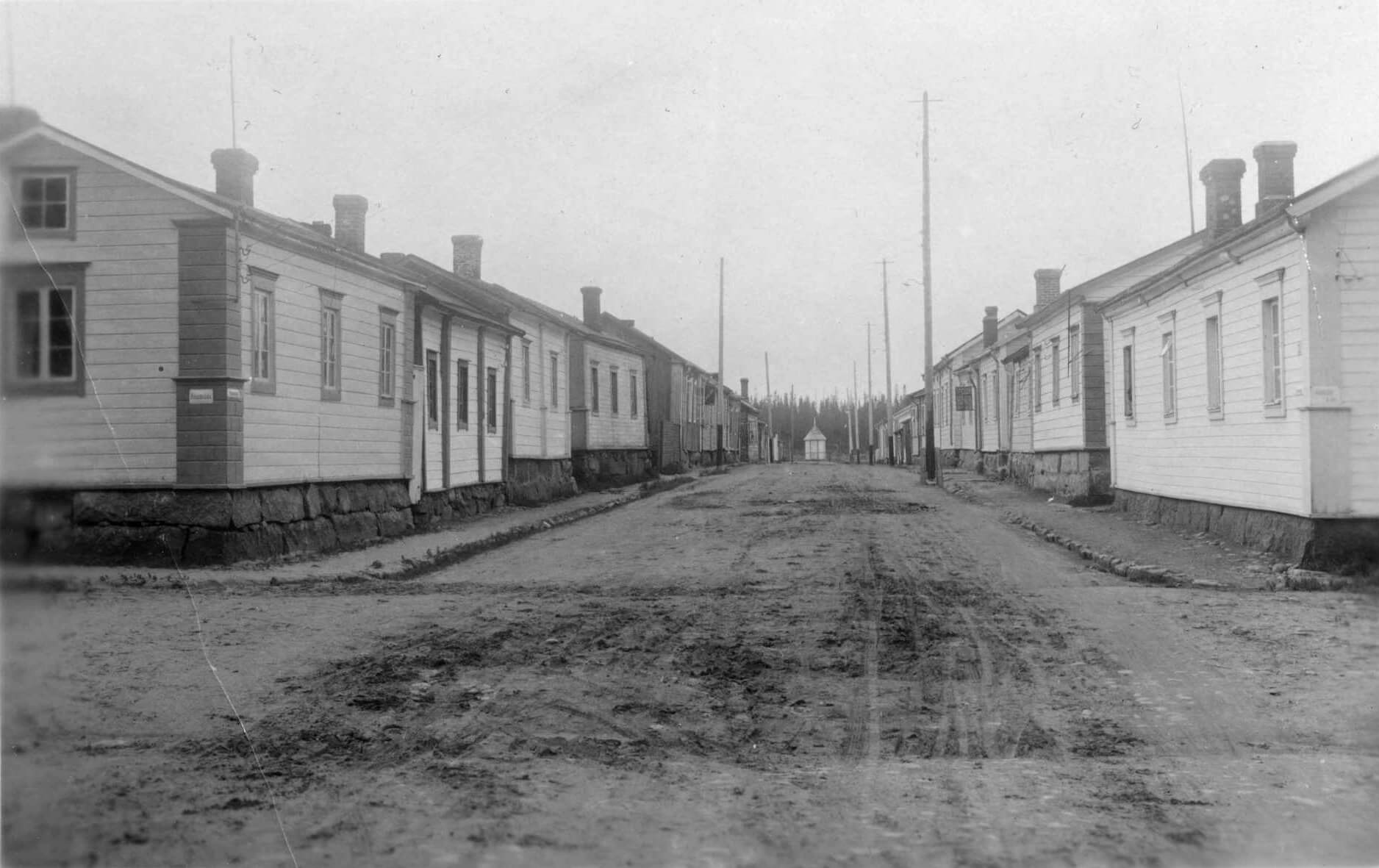
In 1928, the name of Reiponkatu was changed to Kaivokatu, after Jaakoppi’s Spring located at the end of the street. Many families in Raahe got their water from this well for decades. Jaakoppi’s Spring was likely named after Jaakoppi Maarala, who lived next to it. He kept the well clean and maintained it for years until the city took over its care. The well was permanently closed in the 1970s.
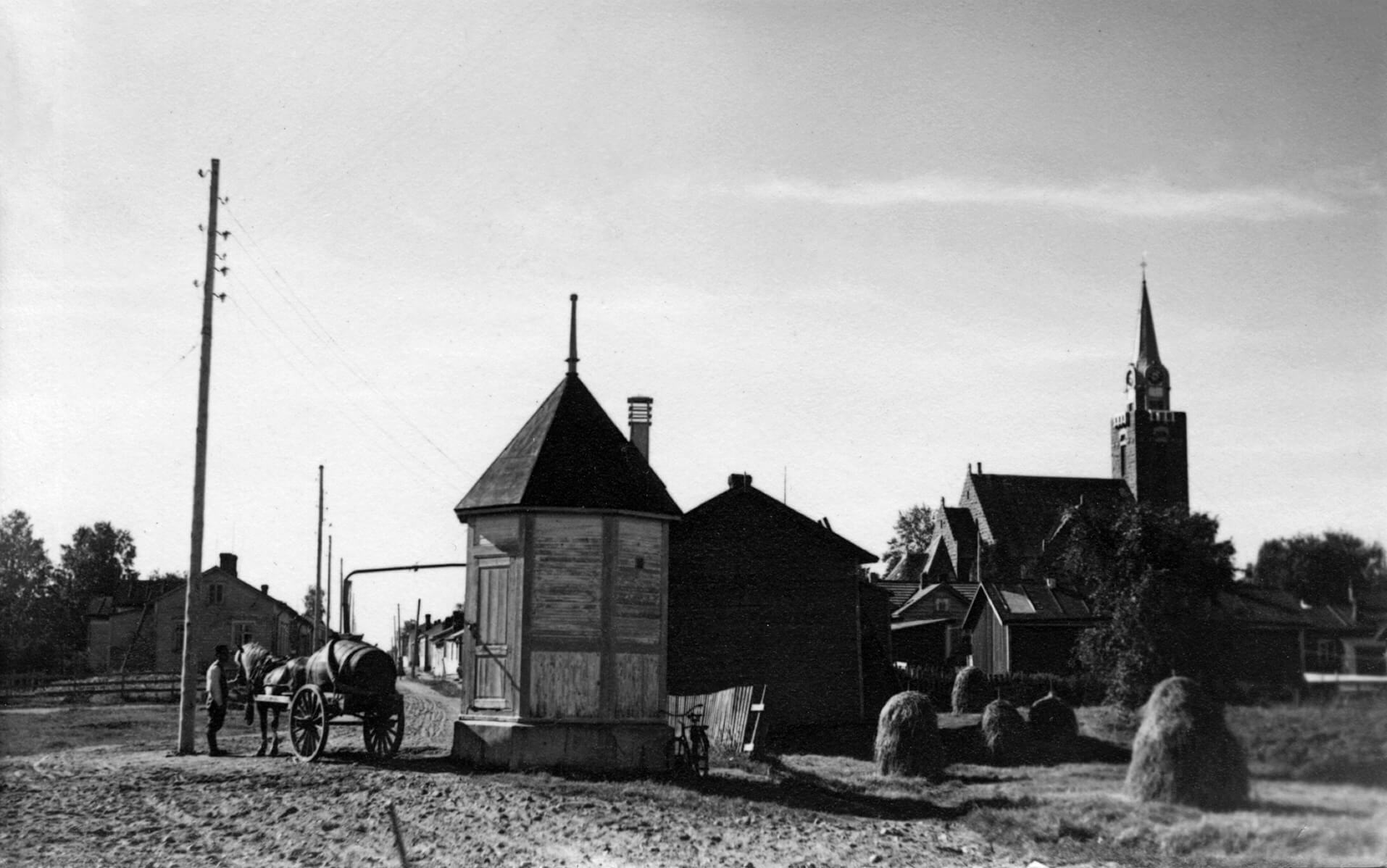
At the corner of Koulukatu and Kauppakatu stands Wanhakulma Guesthouse, a building with a history dating back to 1812. The wing facing Kauppakatu was built by merchant and councilman Henrik Montin on the site of his house that was destroyed in the Great Fire of Raahe. After Henrik’s death, the house passed to his son, Michel Montin. The construction date of the wing facing Koulukatu is unknown, but it was built later than the Kauppakatu side. Mikael Montin Henrikson operated as a merchant in the Kauppakatu wing that he had commissioned. Several generations and branches of the Montin family have lived in Raahe, but Michel was a lifelong bachelor. Besides him, the household included one unmarried sister, two widowed sisters, and a niece.
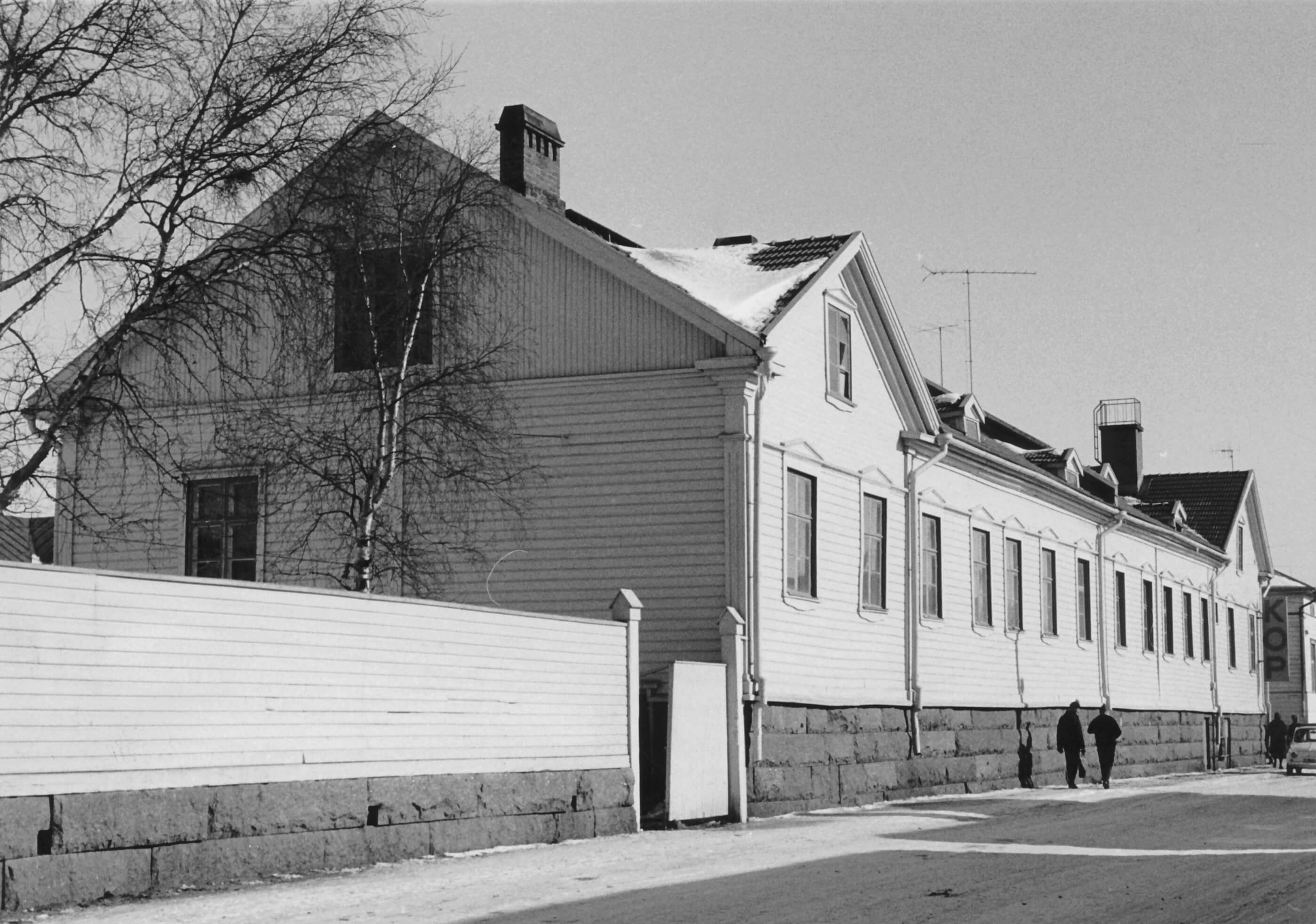
After Michel Montin, the house was owned by Mayor Gregorius Gummerus in the 1830s and 1840s. In the 1850s and 1860s, the house was home to sea captain Anders Lindman, and after his passing, ownership transferred to his widow, Sofia Lindman, who retained it until 1891. During Sofia’s ownership, the building housed a grocery store. Afterward, ownership passed to Johan Anders Lindman and Anna Elvira Lindman.
The house changed owners several times in the early 20th century. Over the years, it has housed the forestry company Raahe Oy, the headquarters of the Civil Guard, and the Kansallisosakepankki bank, which operated in the building until 1971. The bank's vault, with its heavy doors, remains in the main building to this day. The City of Raahe purchased the house in 1973, after which it was used for various municipal offices, including payroll, social services, youth services, and cultural administration.
The current owners bought the house in 2000, renaming it Wanhakulma Guesthouse and converting it into accommodation. Until 2018, the building also housed a flea market. Guests staying at Wanhakulma may sense the presence of Michel Montin, as rumors suggest that he still roams the guesthouse’s hallways.
Upstairs at the Packhouse Museum, there are tiny wooden sculptures and a dollhouse on display. They were carved by Samuli Sarkkila, whose sculptures depict the people of Raahe in the 1920s and 1930s.
Sarkkila was born in 1878 in Pattijoki. He traveled the world before settling back in Raahe. Even after returning from America, he had considerable wealth, but since he did not exchange his earnings into Finnish marks, they lost their value during the 1928 stock market crash. As a result, he could not afford to buy a house, and his fiancée left him. Sarkkila took up residence in a small baker’s cottage in the yard of Heikki Nordström’s house (Kirkkokatu 27).
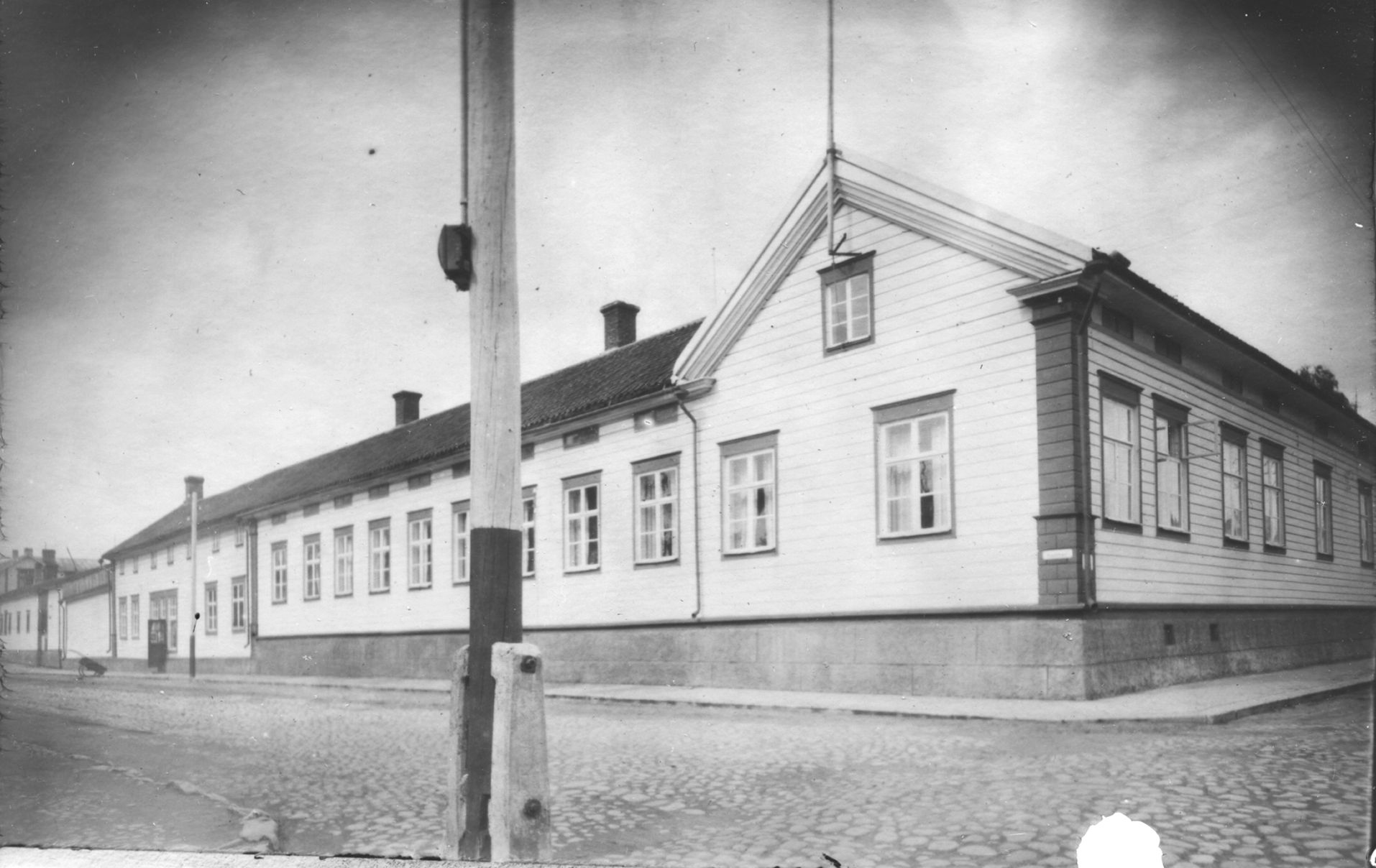
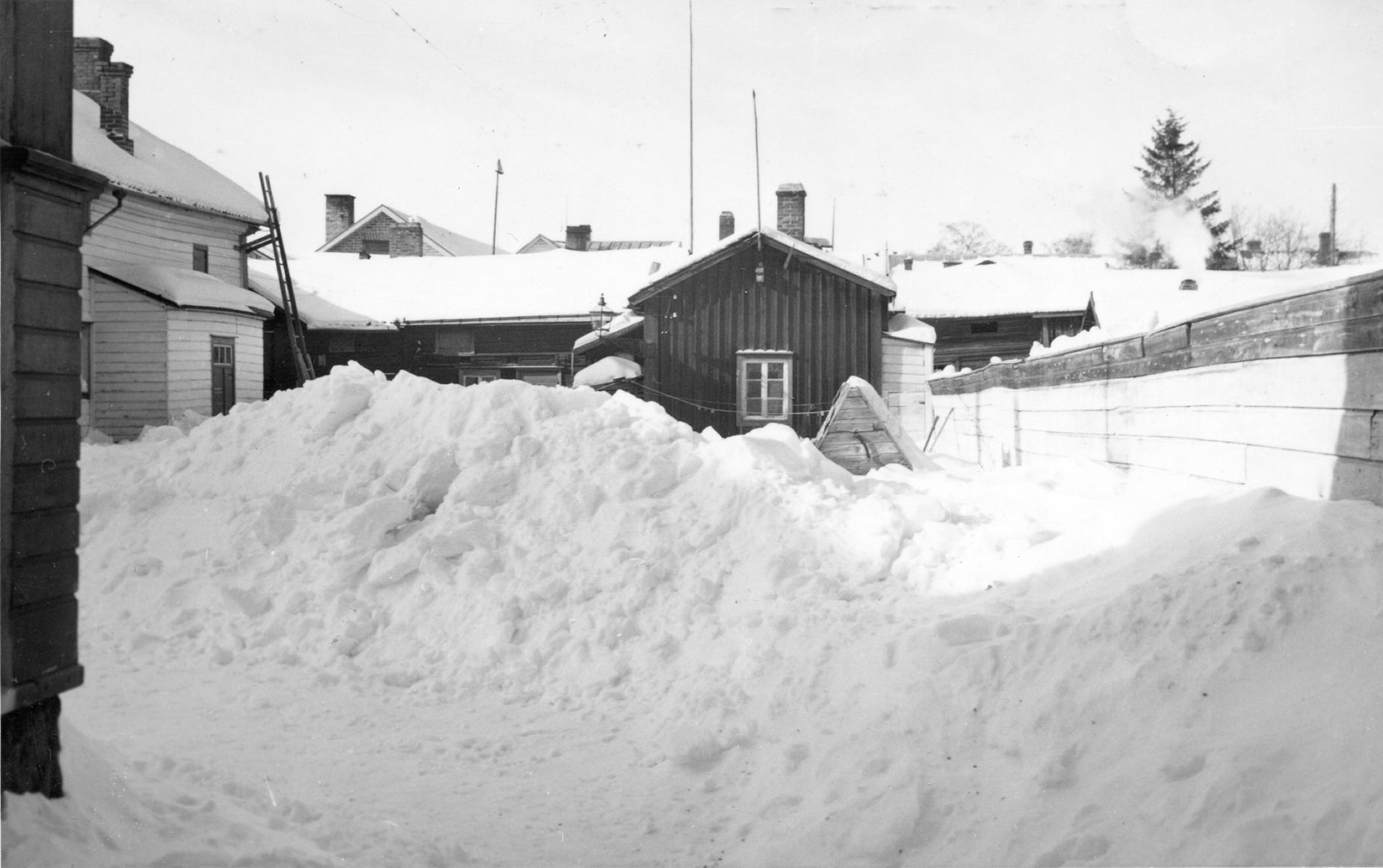
Sarkkila was skilled with his hands, so he earned a modest living by crafting simple wooden sculptures. His wood carvings told stories of his own life, Raahe, and its people. Sarkkila assembled his sculptures into a carousel, which he showcased to the townspeople. This brought him some income, but the police intervened, halting the operation. Sarkkila was fined because he had not paid the entertainment tax. Outraged, he broke the carousel and burned the figures in the oven.
Sarkkila, who lived a solitary life, was described as kind and quiet by nature. He passed away in Raahe in 1956.
Sea captain Johan Himanka from Raahe was a big, bearded man. His voice was said to be so powerful that it could rival the roar of a storm. Himanka completed several successful voyages around the world.
On one occasion, after a sailing journey that lasted over two and a half years, Himanka and his crew ended up on the island of Madagascar. Their ship ran aground on a coral reef and could not be repaired, but the crew managed to reach land in lifeboats. They had to stay ashore for a couple of weeks.
Unexpectedly, someone approached Himanka and asked if the good captain would consider becoming their emperor. He was told the role would require nothing more than sitting with a silk hat on his head and dispensing justice. Himanka declined the honor.
Captain Himanka lived in the house on the corner of Kirkkokatu and Cortenkatu, which is now divided into a home for two families.
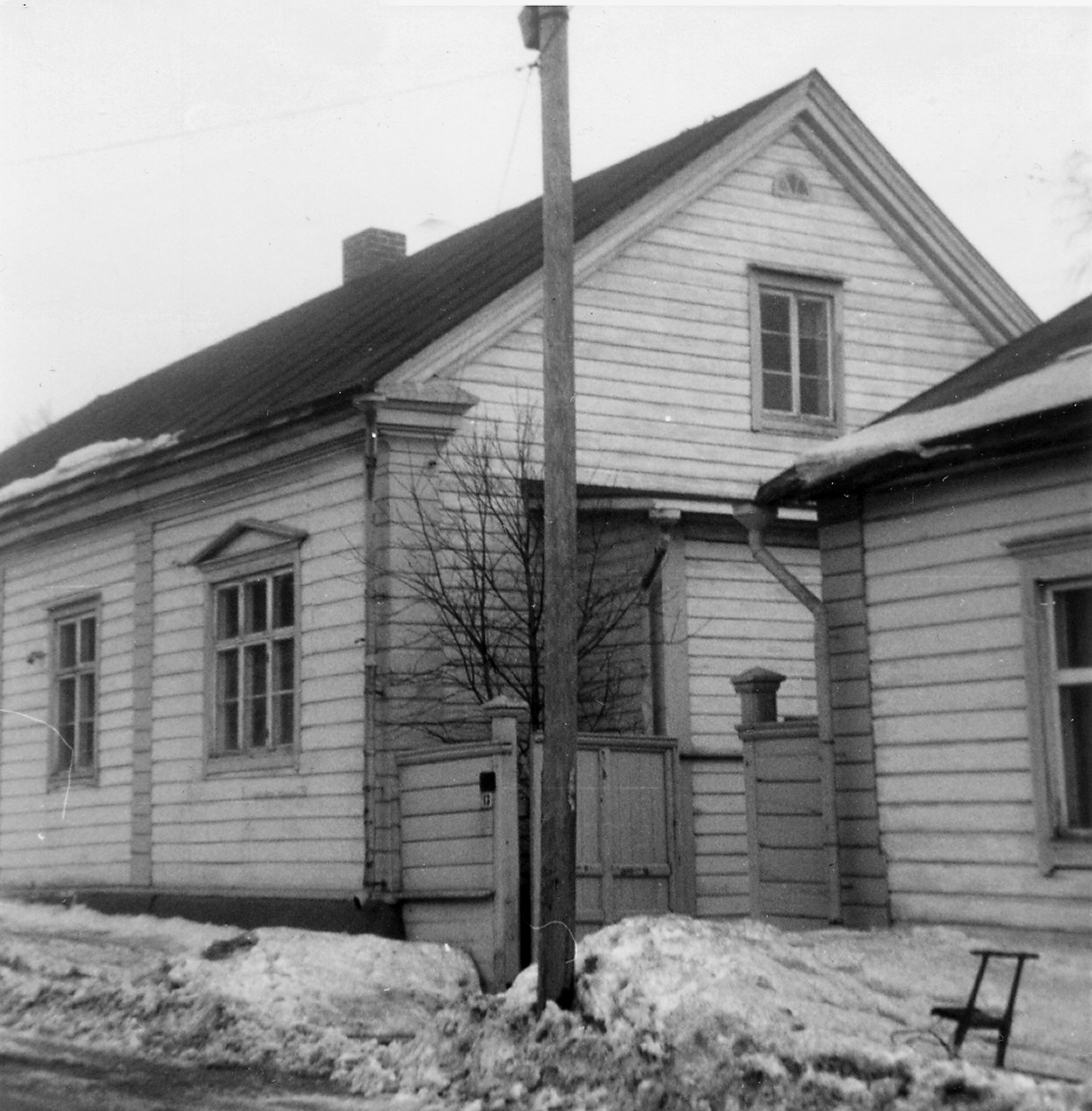
Isak Gellman, born in Sweden in 1800, arrived in Raahe as the captain of a ship owned by a local Raahe merchant. He left his maritime career at a young age and settled on Kauppakatu, where he successfully ran a shop. Gellman also served as a town councilor in Raahe until his death. He had no family.
Upon his death, Gellman bequeathed a large sum of money to establish a hospital in Raahe. He required that the poor must receive treatment free of charge, while the wealthy should pay a reasonable amount for their care.
Initially, there were plans to establish the hospital in Gellman’s home (Kauppakatu 34), but it was deemed too small. Eventually, with the funds, the town purchased merchant Ahlholm’s house (Brahenkatu 20) at an auction. That building has since been demolished, and an apartment block now stands in its place. In 1912, a new hospital was built in Pitkänkari when the original premises became too cramped over the years.
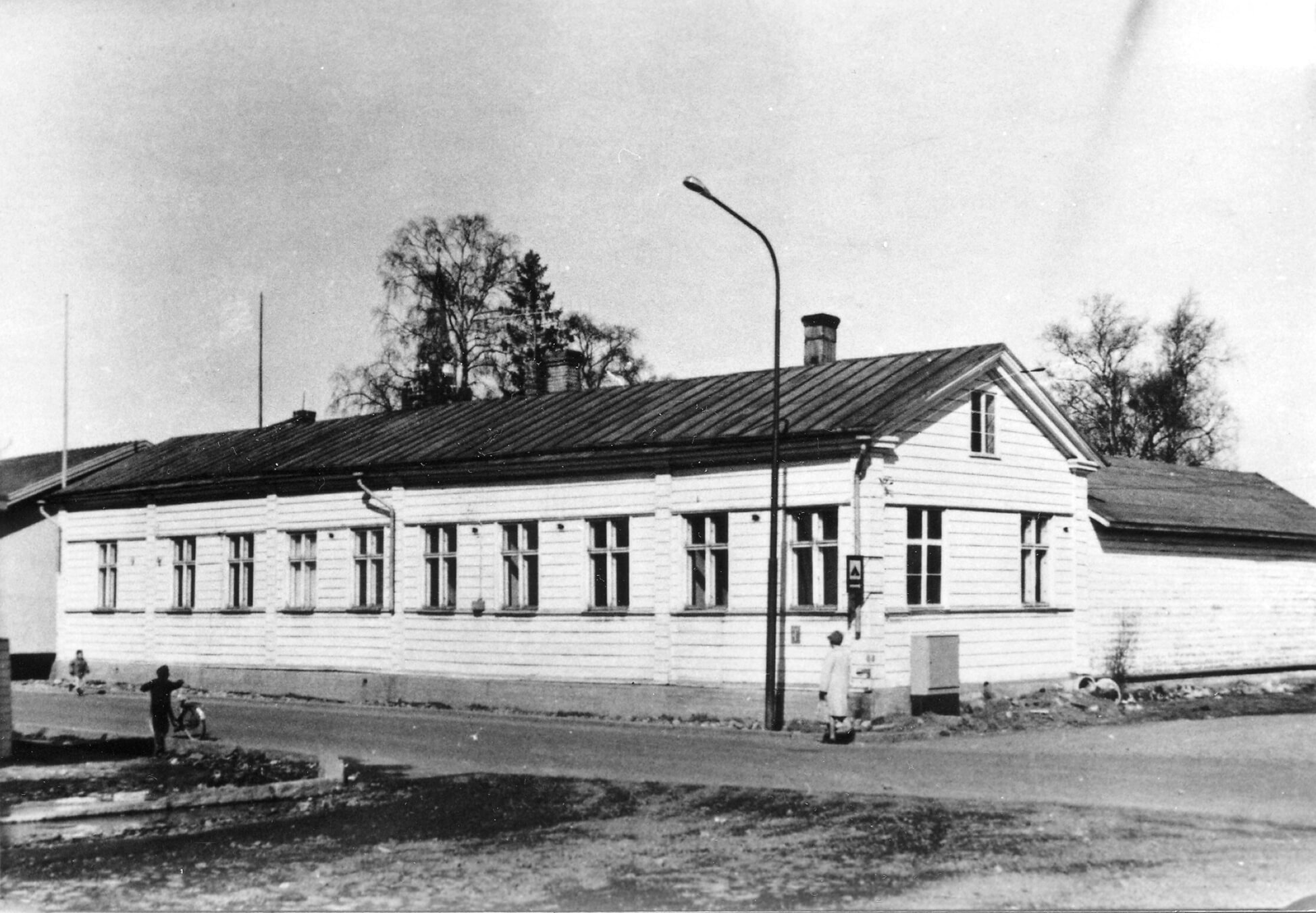
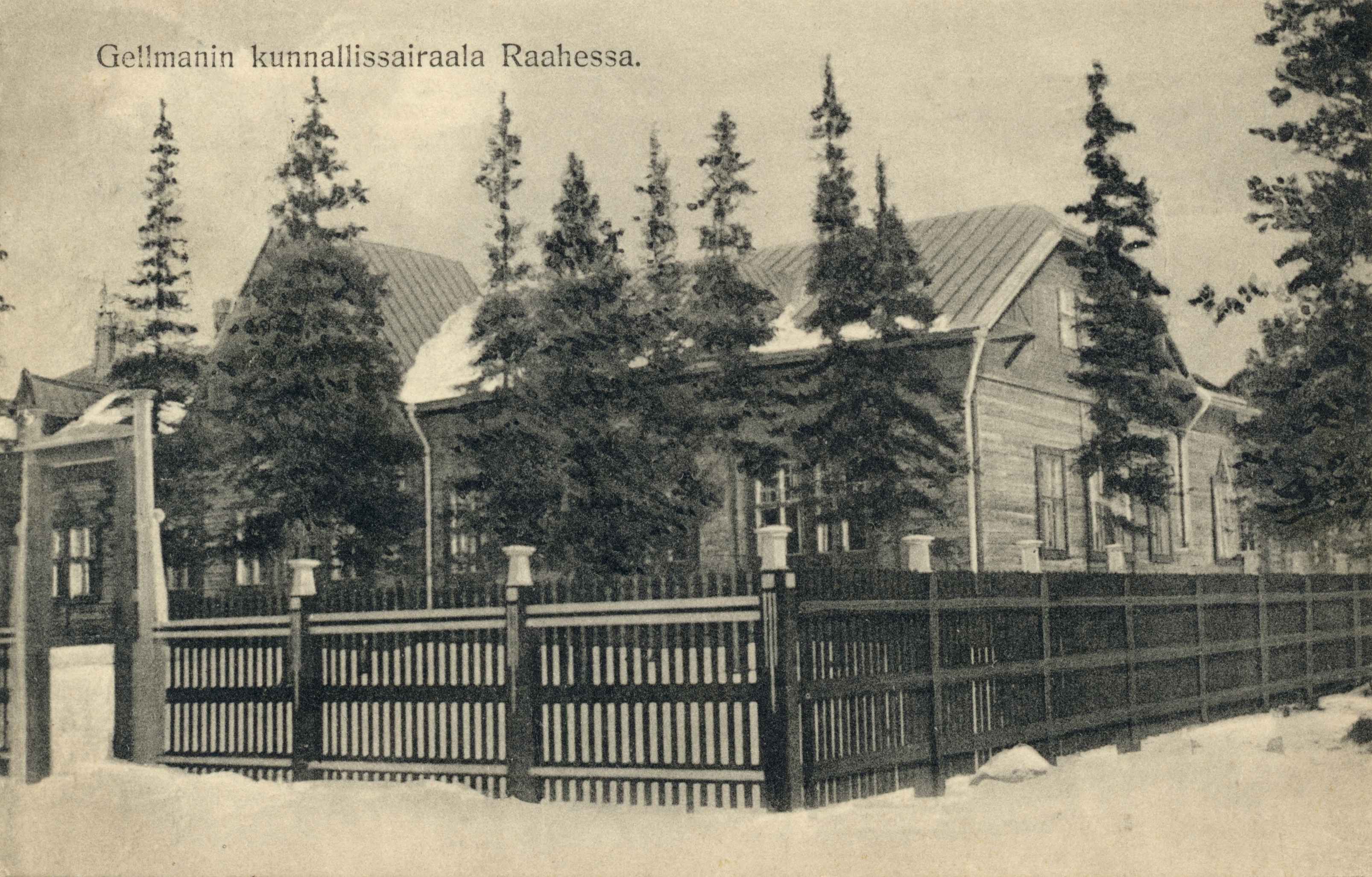
In the past, artisans were a respected group of their own. The path to becoming a master craftsman was long and arduous — one had to first work for several years as an apprentice. Many craftsmen lived and worked in Raahe during the 19th century. One of them was Adolf Fredrik Westman, a founder and coppersmith. He had his own art forge at Kauppakatu 18.
Westman specialized in candleholders and the elaborate chandeliers and wall sconces made for churches. The chandeliers and sconces of Raahe Church were made by Westman, as were those of more than ten other churches. The rooster gazing over the town from the tower of Raahe Church is also a product of Westman’s workshop. In addition to decorative work, Westman also did regular blacksmithing, such as making wheels for coal carts, sled runners, scythes, harrows, shovels, pots, pans, and hinges.
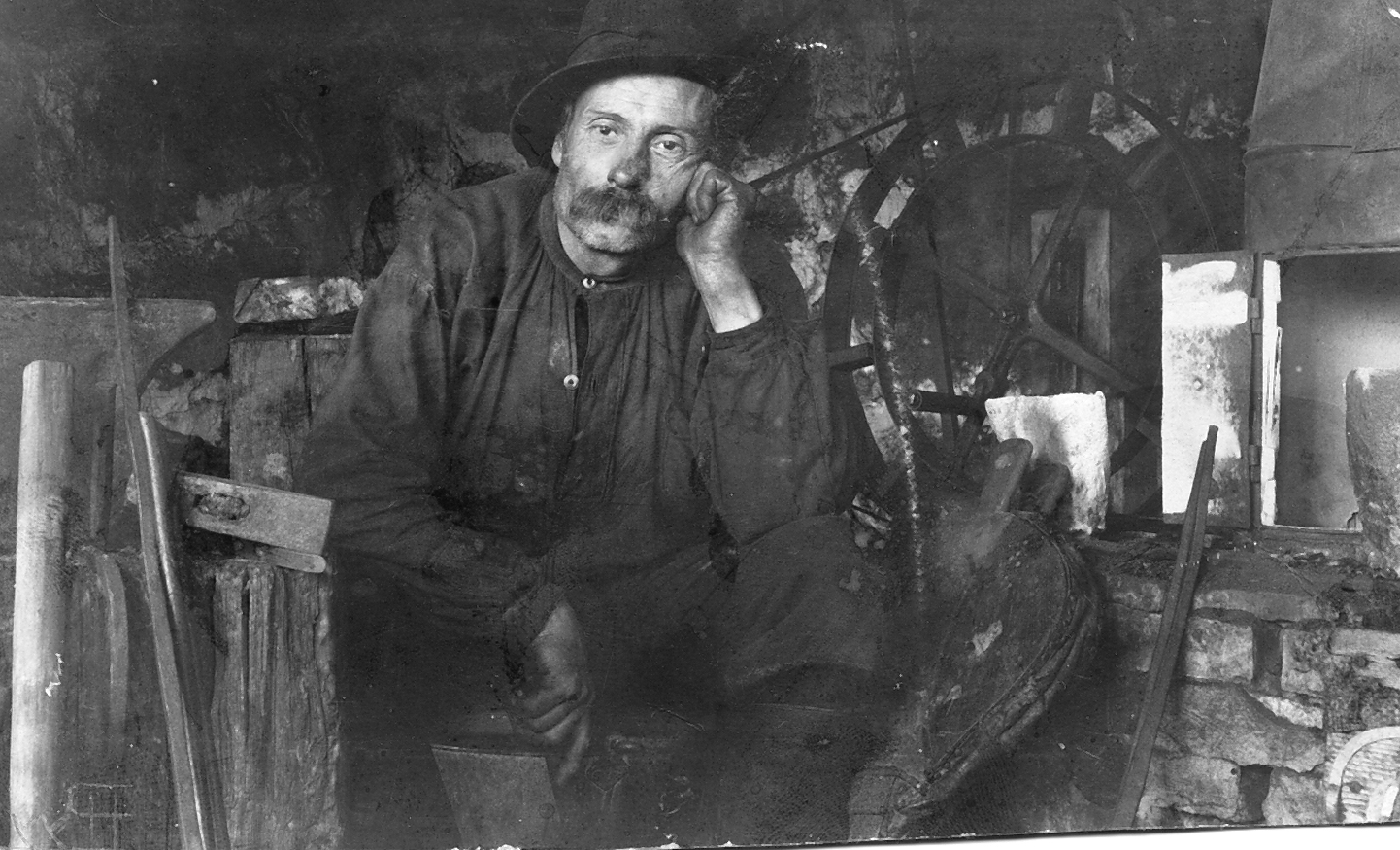
Westman’s son Wiljo worked as his father’s assistant and became just as skilled a metalworker. Wiljo specialized in various surface treatment techniques. He continued to run the forge after his father's death in the 1940s but had to cease operations soon after due to declining health.
Related content
- Old Town Raahe
- Pekkatori Square in the heart of Old Raahe
- Raahe Church of the Holy Trinity
- Old Pharmacy
- Packhouse Museum
- The Sovelius House
- Experience Life at Trade House of Lang
- The Trade House of Lang, Unique Historic Hotel Experience in the Heart of the Raahe Old Town
- Trade House of Lang 19th Century Style Cafe and Restaurant at the Raahe Old Town
- Kinosalonki Sofia
- Wanhakulma Guesthouse in Old Town Raahe

